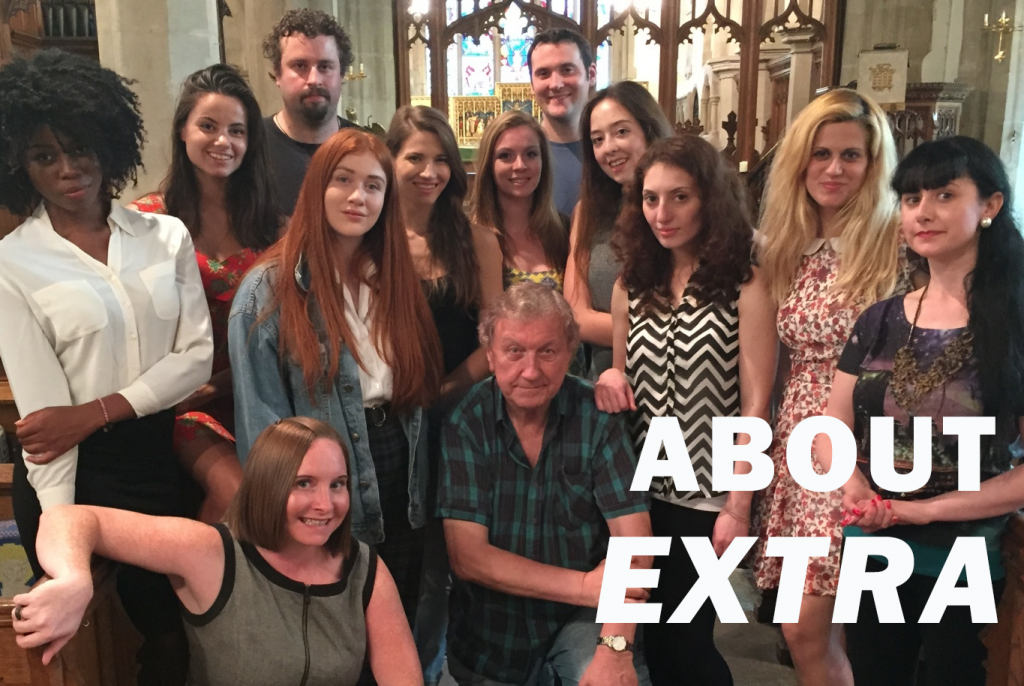
A STROLL DOWN MEMORY LANE

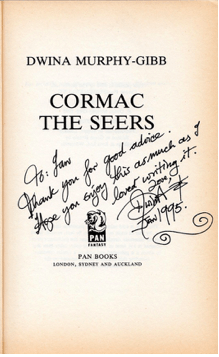 Above: Ian Woodward with the Bee Gees’ late Robin Gibb and his novelist wife Dwina at their 10-bedroom house in Miami. The filmmaker, who first met them in 1993, had been a guest on several occasions at the Gibbs’ rambling, converted 12th-century former-monastery home in Oxfordshire. Both homes are special, but their mansion on Miami’s Millionaires’ Row – with Jennifer Lopez, Ricky Martin and Robin’s brother Barry all living in neighbouring properties – was “different”: notorious for being a Mecca for sexual shenanigans and adulterous relationships.
Above: Ian Woodward with the Bee Gees’ late Robin Gibb and his novelist wife Dwina at their 10-bedroom house in Miami. The filmmaker, who first met them in 1993, had been a guest on several occasions at the Gibbs’ rambling, converted 12th-century former-monastery home in Oxfordshire. Both homes are special, but their mansion on Miami’s Millionaires’ Row – with Jennifer Lopez, Ricky Martin and Robin’s brother Barry all living in neighbouring properties – was “different”: notorious for being a Mecca for sexual shenanigans and adulterous relationships.
The house was the location for John F Kennedy’s licentious extramarital trysts with Marilyn Monroe and other paramours. The helipad at the end of the waterfront back lawn, which enabled the president and the Some Like it Hot star to fly to the mansion unseen, was still there when Ian Woodward called round on Robin and Dwina.
“The spookiest thing,” recalls the filmmaker, “was going up the grand Gone with the Wind-style marble staircase to the first floor bedrooms and knowing that Kennedy and Monroe had walked over the very same granite steps all those years earlier.” As Robin boasted over a salad and chilled lager lunch, “Our bedroom is where Kennedy made love to Marilyn.”
Robin shared Ian Woodward’s passion for all things Charles Dickens, as the filmmaker recalls: “At Robin’s Oxfordshire home, sitting on a lectern, is a huge and heavy leather-bound scrapbook containing newspaper and magazine cuttings about the David Copperfield author. What makes the scrapbook so extraordinary is that the cuttings were assembled by a Dickens admirer during the lifetime of the novelist. It’s a unique and valuable source of reference and research.”
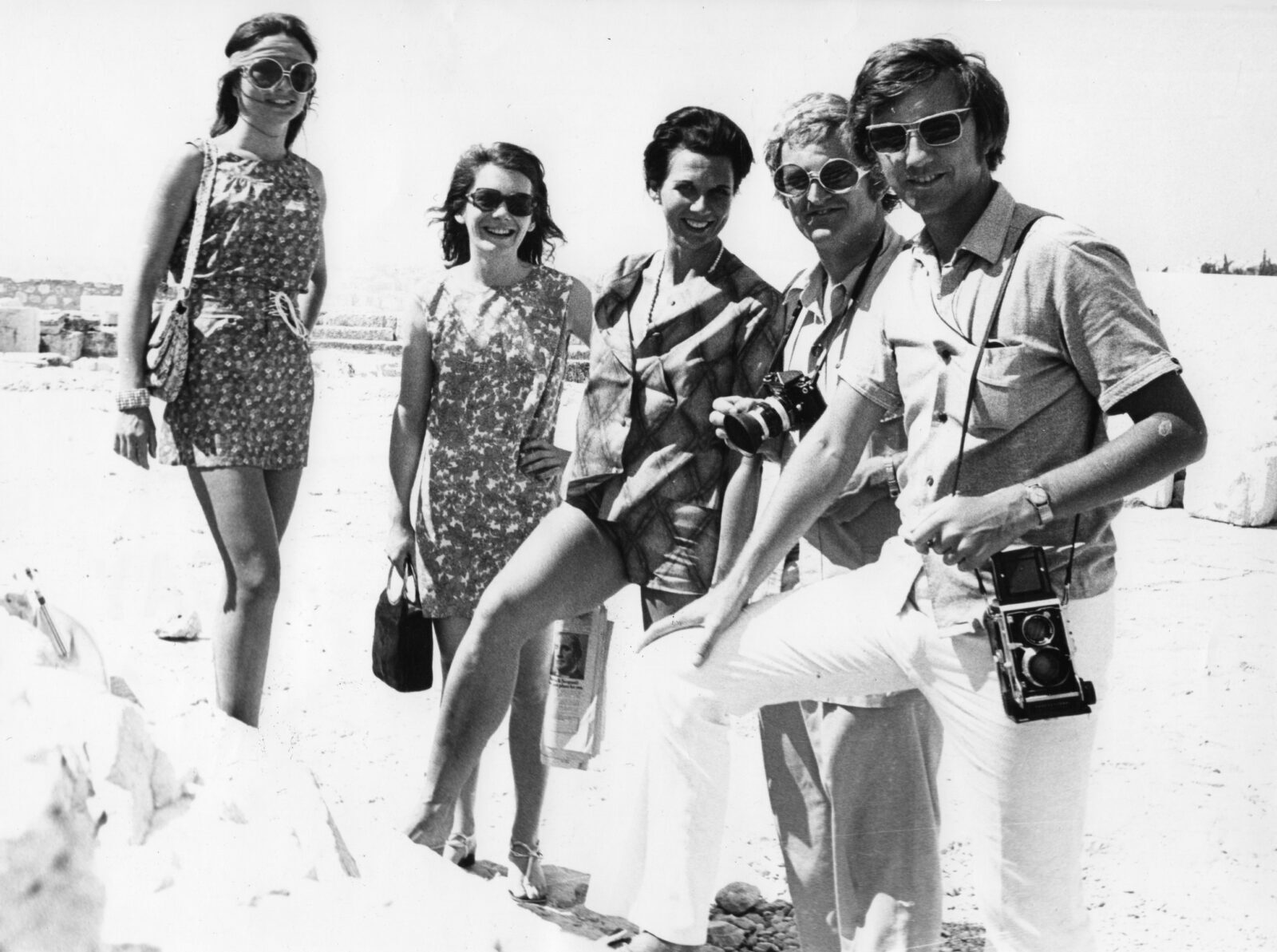
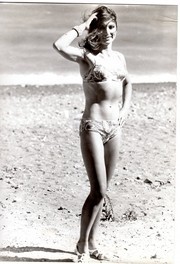
Zenka Woodward in Cyprus
On the Acropolis in Athens with (left to right) the filmmaker’s wife Zenka Woodward, PR lady of the London Festival Ballet (now English National Ballet), ballerina Dame Beryl Grey (the company’s Artistic Director), celebrity photographer Joe Bangay, and Ian Woodward. Later, after the Woodwards and the ballet company had flown to Cyprus, Joe Bangay said: “Right, Zenka, I’m going to take a snap of you on the beach.” The photo on the right is one of many snaps taken that day. Dame Beryl was the first English dancer to appear as guest ballerina with the Kirov Ballet in St Petersburg and the Bolshoi Ballet in Moscow and the first Western guest artist to dance with the National Ballet of China in Beijing and the Shanghai Ballet Company.

Above: Dame Beryl Grey in her dancing years
Below: Ian Woodward on Sunset Strip in West Hollywood with the ever-debonair Cary Grant, named in 1999 by the American Film Institute as the second greatest male star of Golden Age Hollywood cinema (after Humphrey Bogart).
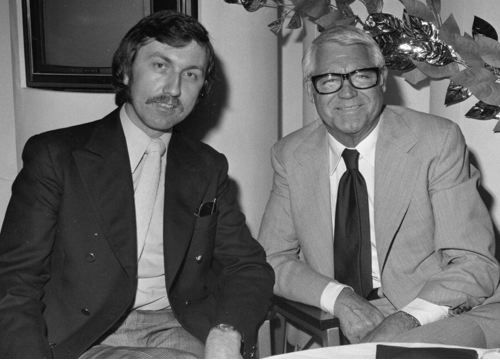
Film critic David Thomson referred to Grant as “the best and most important actor in the history of the cinema”, while the film critic Richard Schickel said that he’s the “best star actor there ever was in the movies”. Audrey Hepburn, who co-starred with Cary Grant in Charade, loved him – as no doubt at some point did the first four of his five wives.
“I met him three times and I always succumbed to his dry wit,” says Ian Woodward. “His quips were delicious: ‘Everyone wants to be Cary Grant – even I want to be Cary Grant.’ Bizarrely, the last time I met him at a London hotel, his fourth wife Dyan Cannon (from whom he was now divorced) – the mother of his only child, TV’s Movie Stars actress Jennifer Grant – was living in a ground-floor flat on the other side of the road in South Kensington. I could vouch for that because just two weeks earlier Dyan had made me, in her chic, cosy kitchen, some deliciously mouth-watering American-style pancakes with bacon and maple syrup.”
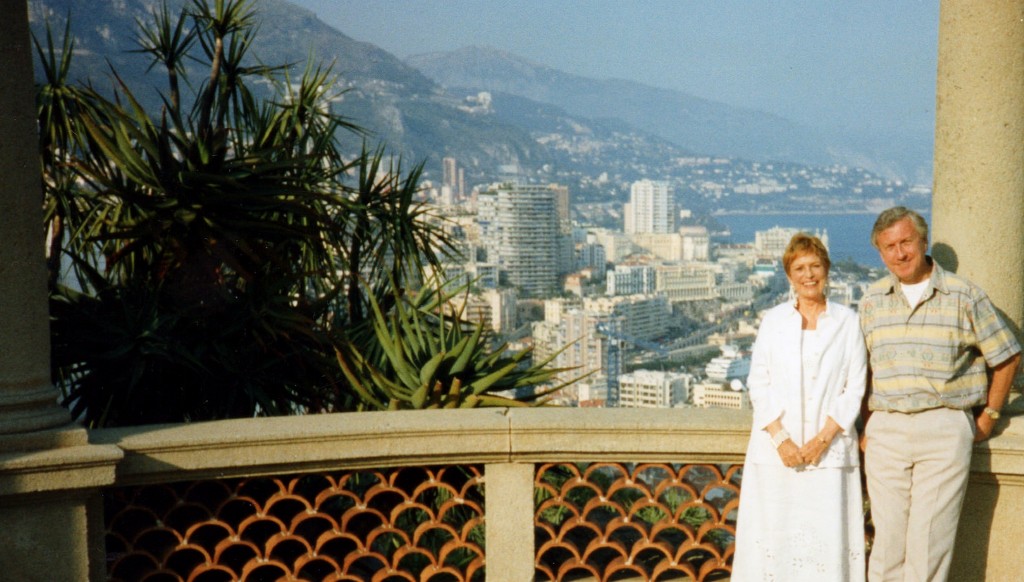
Above: With best-selling author Shirley Conran at her home in Monte Carlo. Before Sex and the City, before Fifty Shades of Grey, there was Shirley Conran’s bonkbuster Lace, which became a Hollywood mini-series. Still in print, the novel is stuffed full of graphic sex scenes and the memorable line: “Which one of you bitches is my mother?”
It was Shirley Conran in Superwoman and Down with Superwoman, after all, who taught harried housewives of the 1970s that “life’s too short to stuff a mushroom”, sofas are for lying on, not sweeping under, and rugs can hide a multitude of sins (the devil dust, in other words). She championed the philosophy “First things first, second things never”.
Says Ian Woodward: “I’ve visited Shirley at her various homes in France and England and, as nice as Monaco undoubtedly is, nothing could compare with her château (below) in the Var department in the Provence-Alpes-Côte d’Azur region in southeastern France. It is here, in the heart of Seillans, that I twice visited Shirley’s impressive Château de Seillans, the second time with my wife Zenka.

“The château is part of an 8th-century fortification built on the fifth and last hilltop inland from the Côte d’Azur to protect the area from marauders. It was enlarged in the 12th century and lavishly refurbished by the author of Lace 2, Savages, Crimson and Tiger Eyes in the 20th century.
“Shirley was not in residence when I went there with Zenka. Her local housekeeper loaned us the château’s big chunky key. ‘Have a lovely time,’ she said with the sort of double entendre intonation that the French are so good at and have made into an art form.”

Top photo: Ian Woodward with actress-singer Bonnie Langford at her home just outside London. The Broadway and West End star, and popular companion Mel to the sixth and seventh Doctor Whos on television, had just got engaged to fellow actor Paul Grunert. She was very excited and grinning from ear to ear. “I’m like the cat that’s got the cream!” laughed the entertainer who (talking of things feline and whiskery) created the role of Rumpleteazer in the Andrew Lloyd Webber musical Cats.
Lower photo (above): Says Ian Woodward, “I love this stagey photo taken on my trusty Mamiya C220 twin-lens reflex camera in Mauritius in 1995. It was the day after Bonnie and Paul were married. I was a witness at the wedding ceremony held on a desert island just a few miles out at sea, which we got to on a very swanky motor launch.
“That night I joined the newly-weds in their palatial seafront chalet for a lobster and Champagne dinner, served by two black-suited butlers who, like a scene out of TV’s Downton Abbey, stood facing us with their backs to a wall throughout the entire six-course meal.
“For several days I was their unofficial videographer after Paul handed me his camcorder, saying ‘Do a fly-on-the-wall honeymoon film about us.’ I don’t think Bonnie would have been very happy if I’d taken him up on the offer!”
Much has happened to Bonnie since then, not least her regular EastEnders role as Carmel Kazemi, the overly protective and outspoken mother of the soap’s established character, Kush Kazemi, played by Davood Ghadami.

Above: The filmmaker’s daughter, Stefanie, in the theatre dressing room of Liz Robertson when the actress-singer was playing Maria von Trapp in The Sound of Music. Liz is the widower of lyricist and librettist Alan Jay Lerner, of the illustrious Lerner & Loewe partnership behind a string of hit musicals including Camelot, Brigadoon, Gigi, Paint Your Wagon and, arguably the best loved of all, My Fair Lady.
Says Ian Woodward: “Stefanie, like her parents, was always enthralled by musicals. We still are. Cats, Starlight Express, Show Boat (we had to drive to Oxford to see that great masterpiece – it’s almost an opera – by Jerome Kern and Oscar Hammerstein II)…whenever a new musical opened, we’d be there. Stefanie sort of hankered after going into musical theatre, but when I started to take her to auditions and rehearsals, and she saw the hard slog that went into the great artform that is the stage musical, her enthusiasm began to wane.
“And later, after listening to Liz Robertson, one of Britain’s most experienced musical stars, whose West End career began with A Little Night Music, directed by the legendary Hal Prince, Stefie began to think, Mmm, greatness is not thrust upon you, it is earned. Today, in her early 30s, she is one of the UK’s top interior designers.”
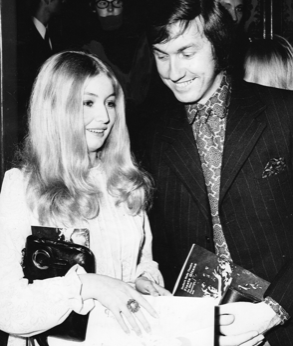 Left: With Welsh singer Mary Hopkin at Sadler’s Wells Theatre in London at the opening night of a season of Flamenco song and dance – lots of foot-stamping, castanetting and olé-ing. Mary loved all things Spanish and so this was a big treat for her. And also for fellow Welsh-born Ian Woodward.
Left: With Welsh singer Mary Hopkin at Sadler’s Wells Theatre in London at the opening night of a season of Flamenco song and dance – lots of foot-stamping, castanetting and olé-ing. Mary loved all things Spanish and so this was a big treat for her. And also for fellow Welsh-born Ian Woodward.
Mary became one of the first artists to record on the Beatles’ Apple record label. Her debut single, Those Were the Days, produced by McCartney, became a No 1 hit on the UK Singles Chart, reached No 2 in the US Billboard Hot 100 (where for three weeks it was held out of the top spot by the Beatles’ Hey Jude), and two weeks at No 1 in the Canadian RPM Magazine charts. It sold over 1.5 million copies in the United States alone. Its global sales topped eight million. Her debut album, Postcard, also produced by McCartney, reached No 3 on the UK Albums Chart. “Oh, and in private life,” adds the filmmaker, “Mary could make a mean baked beans on toast!”
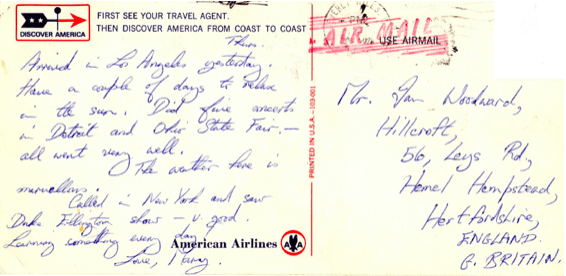
Below: Ian Woodward FZS in Kenya pursuing his “other life” as a naturalist. The filmmaker, a Fellow of the Zoological Society of London, says: “When this photo was taken I had yet to locate and study the unique Kenyan hippo, an animal that has always held an immense fascination for me. Maybe that’s because, in addition to being irritable and normally cranky, they are very dangerous. Danger is exciting. Like my bungee-jumping son, I’ve always been drawn to it.
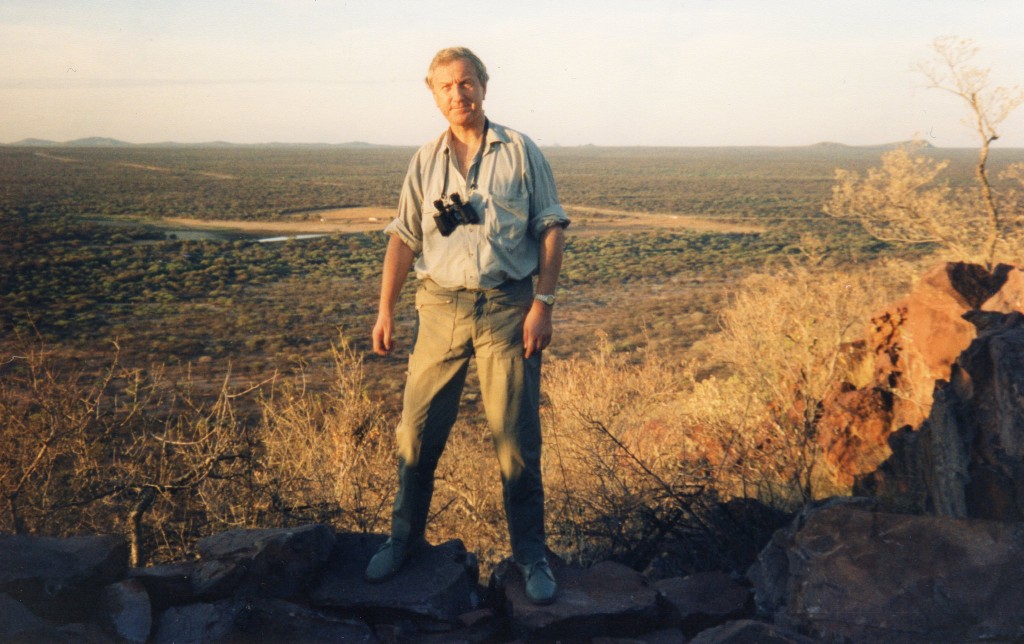
“I was stupid enough, one time in Zambia, to venture out on the Zambezi in a little rowing boat, fully aware that hippos lurked here under the water and that just the night before they had dragged three cows, blissfully drinking on the bank side, to their deaths. Hippos may look like oversized harmless cows but they are one of the most dangerous beasts in Africa and kill more humans than any other animal there.
“On another occasion, in Uganda, I walked alone into a dense forest with my video camera, aware that leopards were probably skulking in trees above me, ready to pounce on prey. But I’d been told that the beautiful forest wood hoopoe (Phoeniculus castaneiceps) had been seen there and so the urge to film the exotic bird had anaesthetized all norms of commonsense and all innate thoughts of safety and survival.
“I never did find the elusive forest wood hoopoe – although I later stumbled across a leopard on a rocky outreach at dusk – but I did manage to film the stunning yellow-crested woodpecker (Dendropicos xantholophus), the European form of which, Upupa epops, is a frequent (albeit shy) visitor to our garden in Spain.
“In Kenya it was a thrill to see (having only ever seen them before on TV) the graceful impala, a medium-sized antelope often found in large herds and known for its leaping ability. And it was equally a buzz to come across a pack of grotesque hyenas (let’s be honest, they’re not going to win any beauty contests) which have the strongest jaw pressure and most powerful bite of any animal in Kenya except for the Nile crocodile. For an ornithologist – which I am, for my sins – the avifauna of Kenya is Paradise on Earth, boasting, as it does, some 1132 species. Staggering!”
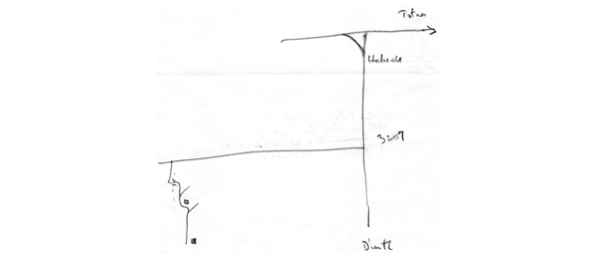
Above: This sketch, done in thick pencil, was drawn by the real-life Christopher Robin and posted to Ian Woodward so that the filmmaker would know how to find Christopher’s difficult-to-find cottage on the chosen day when he would set off on his journey to visit the now-grown man who all those years ago had gone with Alice to see the changing of the guard at Buckingham Palace.
For anyone who has just landed on Earth from another planet, Christopher Robin is a character created by A. A. Milne – that is, named after and inspired by the author’s son, Christopher Robin Milne. He appears in Milne’s popular books of poems, When We Were Very Young and Now We Are Six, and in the equally admired story-books Winnie-the-Pooh and The House at Pooh Corner.
In the books he is a young boy and one of Winnie-the-Pooh’s best friends. His other friends are Eeyore, Kanga, and Roo, Rabbit, Piglet, Owl, and Tigger. The character has subsequently appeared in Disney cartoons. He is characterised by his uneven socks.
By the time Christopher Robin was 11 years old, he was named in an American magazine as one of the most famous children in the world. Ian Woodward met Christopher at a fairy-tale-like cottage (more Grimm than Perrault) by a little bridge, under which a stream flowed gently by, deep in a forest.
In 1974, Christopher published the first of three autobiographical books. The Enchanted Places gave an account of his childhood and of the problems he had encountered because of the Pooh books. In later life, certainly, as he firmly confessed to Ian Woodward, he became unhappy with the use of his name. He said: “It seemed to me almost that my father had got where he was by climbing on my infant shoulders, that he had filched from me my good name and left me nothing but empty fame”.
He went on to explain that one of his father’s poems, “Vespers”, which describes young Christopher Robin saying his evening prayers, as “the one work that has brought me over the years more toe-curling, fist-clenching, lip-biting embarrassment than any other”. Says Ian Woodward: “I found the real-life Christopher Robin in adulthood to be a dark, rather troubled man, but one whose intellect and occasional, surprising flashes of humour redeemed him as a person just when you thought he was hopelessly lost.”
He adds: “For me, meeting the real-life, flesh-and-blood originals of people portrayed elsewhere in other diverse forms has, by and large, been a big let-down. Perhaps, I pondered, for instance, that Mary Poppins was a cloned representation of her literary creator, P L Travers? Not Julie Andrews the actress who portrayed the umbrella-clasping nanny onscreen but Mary Poppins the gentle and kind and magical and loving woman who is the fictional character in the books.
“I was wrong on all counts when in London I visited P L Travers at her immaculately clean and tidy white-painted Regency house in an equally neat little road adjoining Regent’s Park. There was a sense of the boarding-school headmistress about her, a woman who knew what was what and how she was going to get it. There was nothing cosy or cloying about her, nor anything that could be described as prim and proper. She was just, well – P L Travers.
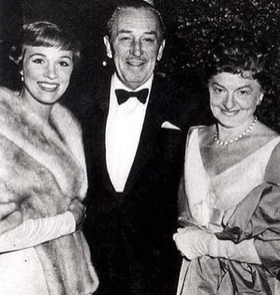
Above: Julie Andrews, Walt Disney and P L Travers at the premiere of Mary Poppins
“I have no idea what she may have been like when Walt Disney released Mary Poppins as a film in 1964, so it is hard to tell whether or not the 2013 film Saving Mr Banks, a dramatised retelling of both the working process during the planning of filming Mary Poppins and also that of Travers’ early life, drawing parallels with Mary Poppins and that of the author’s childhood, got her ‘right’.
“The film stars Emma Thompson as P L Travers and Tom Hanks as Walt Disney. They give compelling, riveting performance in their different ways: her portrayal seemingly overstated, his characterisation seemingly understated.
“In retrospect, after the passage of time, seeing the author presented in the film as a joyless, loveless pedant, finally giving herself over to the delight and imagination of the Wonderful World of Disney, seems to be “spot on”. But that perception does not now, and it did not then, diminish my disappointment in finding one of the happiest series of books ever written for and about children should come from the wellspring of someone so cold and so detached.
“Meeting the Rev W. Awdry, creator of the Thomas the Tank Engine books, was similarly quite an underwhelming experience. He was basically – not to put too fine a point on it – miserable, cheerless. Everything that the always-smiling Thomas, with number 1 painted on his side, and voiced by Ringo Starr in the television series, was not.
“I wonder what Enid Blyton was like? Or Edith (The Railway Children) Nesbit? We know what Beatrix Potter was like: she did not like children. The story goes that a very young Roald Dahl was a huge fan of Beatrix Potter’s books and at the age of six begged to be taken to her farm in Cumbria. When he and his mother arrived, unannounced, they found the writer in her garden.
“She said to him, ‘What do you want?’
“Dahl replied, ‘I’ve come to meet Beatrix Potter.’
‘Well, you’ve seen her,’ Potter told him.
“‘Now buzz off!’”
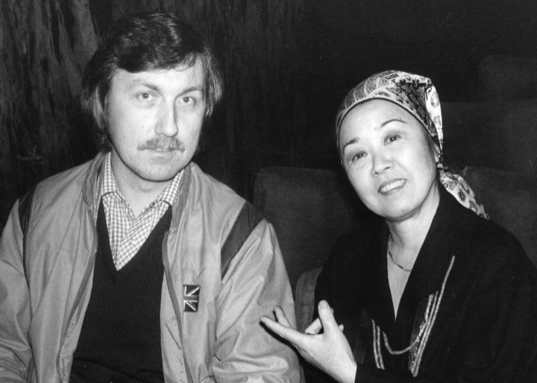
Above: Backstage at the London Palladium with Yuriko, the acclaimed American dancer and choreographer best known for her long association as a performer, teacher, coach and producer of revivals with the Martha Graham Dance Company. Graham was an American modern dancer and choreographer whose influence on dance has been compared with the influence of Picasso on modern visual arts and the influence of Stravinsky on music.
Born in California and now living in Manhattan – at the age of 96 – Yuriko performed the role of Eliza for three years in the original Broadway production of The King and I. She later reprised the role in the Hollywood film starring Yul Brynner and Deborah Kerr.
Ian Woodward met her when she was directing the West End production The King and I and recreating the iconic choreography of Harold Robbins, later to win an Oscar for Best Director with Robert Wise for West Side Story. Yul Brynner was back as the King of Siam but now with Born Free star Virginia McKenna playing the role of Anna Leonowens – who in real life was hired to give King Mongkut’s 39 wives and concubines and 82 children a modern Western education. McKenna’s role as the teacher of the king’s seven children in the London stage show brought her an Oliver Award for her performance.
“I passed Brynner in the corridor, just inside the stage door,” remembers Ian Woodward, “and what struck me most was not his trade-mark shaven head but his height, at 5ft 8in about an inch and a half smaller than the world average height for a male. But he seemed to hold himself in such an upright, taut way that, as a performer, he could somehow make himself appear to be taller than he actually was.”
When The King and I opened in London – Ian Woodward was in the audience on the first night – it was reported to have the largest advance sale in English theatre history. The show, with its blockbusting tunes of “Getting to Know You”, “Hello, Young Lovers”, “I Whistle a Happy Tune”, “Shall We Dance?” and “The March of the Siamese Children” was a phenomenon. Brynner summarised it perfectly. “It’s not a play,” he said, “it’s a happening.”
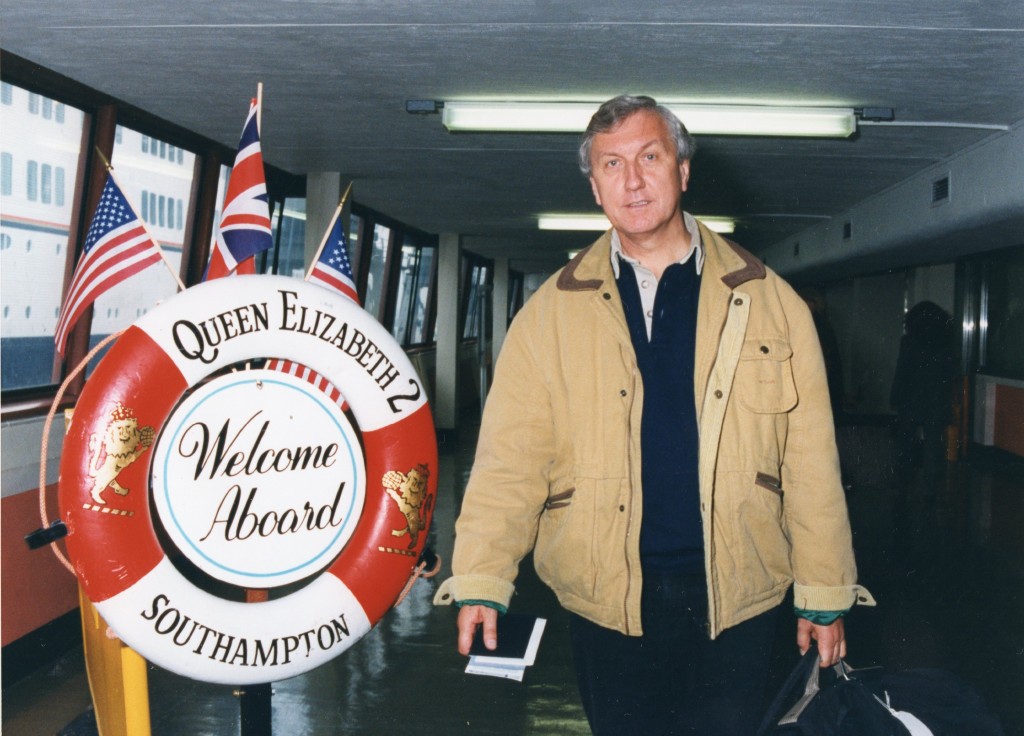
Above: All aboard the QE2 and the Big Apple bound … New York, New York, a wonderful town, the Bronx is up but the Battery’s down. Says Ian Woodward: “I had long been an admirer of the singing voice of the American soprano and playback singer Marni Nixon, so I could hardly believe it was happening when for four days I sat right next to Marni each evening for dinner at the top table.
“Sitting at the table next to us were Sir John Mills and his writer wife Mary Hayley Bell whose novel Whistle Down the Wind was adapted as a film, starring her then teenage daughter, actress Hayley Mills, who was also with them on the QE2.
“At a corner table just behind us was the Hollywood superstar Douglas Fairbanks Jr who, in adventure films such as The Mark of Zorro, Robin Hood and The Thief of Bagdad, could swash his buckle better than most. We chatted together for more than an hour one day on a sheltered side deck. He talked affectionately about his first wife, film icon Joan Crawford, whose affair with Clark Gable rocked Hollywood and whose hatred of Bette Davis was legendary.
“But it was being lucky enough to be playback singer Marni Nixon’s table partner which occupied me most on that unforgettable transatlantic cruise. A playback singer is a vocalist whose singing is pre-recorded for use in films. Playback singers record songs for soundtracks and actors or actresses lip-sync the songs for cameras, while the actual singer does not appear on screen. Marni, who has now retired from the business, was at the top of her game.
“She dubbed the singing voices of Deborah Kerr in The King and I, Natalie Wood in West Side Story and – most thrillingly for me, as her biographer – Audrey Hepburn in My Fair Lady. She also sang for Sophia Loren in Boy on a Dolphin and dubbed Rita Moreno’s singing as Anita in the ‘Tonight’ quintet in West Side Story.”
Her first onscreen appearance was as Sister Sophia in the film The Sound of Music. In the DVD commentary to the film, director Robert Wise commented that audiences were finally able to see the woman whose voice they knew so well. The first of her three husbands, Ernest Gold, composed the theme song to the film Exodus.
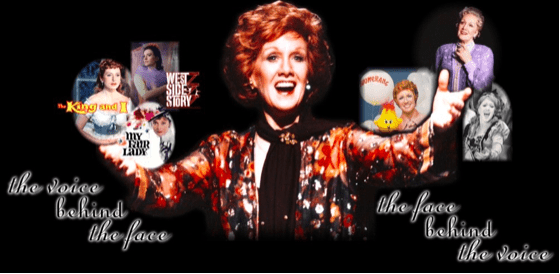
Ian Woodward recalls with great enthusiasm his time spent with Marni Nixon (above) on the QE2 and their l-o-n-g chats about Audrey Hepburn. She told him: “Audrey picked me up in her limousine every morning and took me to the studio. I sat in on her singing lessons, so I could hear not only the Cockney and the upper-class British, which are two different voices. But I also had to get her very unique speech patterns, so I had to listen very carefully so I could catch it.”
And was Hepburn as genteel off-screen as she was on? Apparently so. “She was just a delightful person. Very intellectual and fun and respectful – full of sense of humour,” said Marni. “Yes, very real and warm. It was wonderful.”
But Audrey was also a little bit in competition with Marni because the star of Roman Holiday, Paris When It Sizzles, The Nun’s Story and Breakfast at Tiffany’s wanted to use her own singing voice in the film. “She kept sneaking into the sound stage after I finished dubbing and would say, ‘I think I can do myself better.’ They gave me tapes of her singing and I could hear her saying [to herself] ‘Oh darn, I think I can do better. Maybe I can’t.’
“She was really hard on herself, kept trying…trying very hard to use as much of herself as possible. But we were never rivals. It was only appreciation. She was trying to be as helpful as she could to tell me how to pronounce certain things and approve of it, to make sure it sounded like her – because if she couldn’t do it, then she’d work harder to get the pronunciation into me. She was spectacular that way.”

Above: Letter sent to the filmmaker by Rolf Harris, the Australian entertainer whose career encompassed work as a musician, singer-songwriter, composer, comedian, actor, painter and television personality. In March 2013, Harris was one of 12 people arrested during Operation Yewtree for questioning in connection with historical allegations of sexual offences. On 30 June, he was found guilty of all 12 counts of indecent assault and on 4 July was sentenced to a total of five years and nine months in prison for the offences. He is serving his sentence at HMP Stafford.
As it was Christmas, and as he was starring in pantomime in Hull when he wrote to Ian Woodward, he decorated the envelope with a cartoon of himself as Father Christmas.
“The only other showbiz celeb who used to decorate his envelopes in this way,” reflects Ian Woodward, “was the Hollywood matinee idol Van Johnson (below). And he always used a rather thick red felt-tip pen. Red was definitely Van’s colour. The star of Brigadoon and The Caine Mutiny was always writing to me from wherever he happened to be (“Keep well, keep in touch…”).

“His bright canary-yellow writing paper was very long (much longer than today’s A4), with the name Van Johnson in ugly red Extra Bold Rockwell. His red handwriting was so big it difficult to read. On his hotel postcards he always had a need to show the exact room where he was staying.”
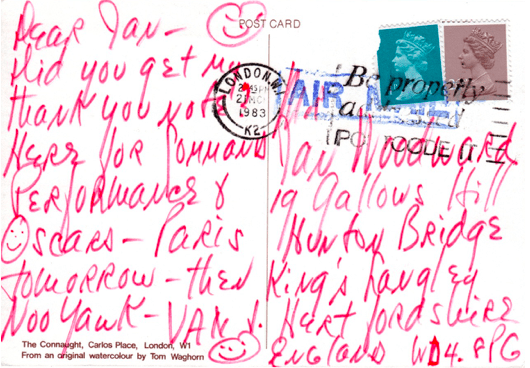
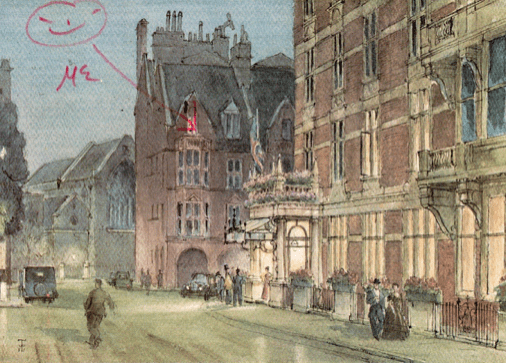
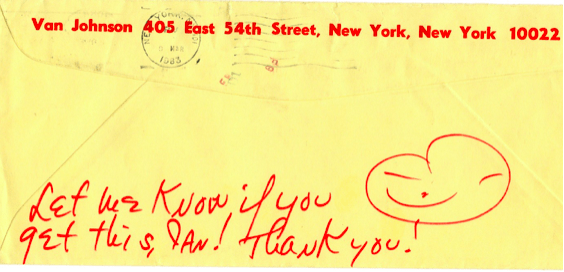
Van Johnson died in 2008 aged 92. For his contribution to the film industry, he has a star on the Hollywood Walk of Fame at 6600 Hollywood Boulevard.
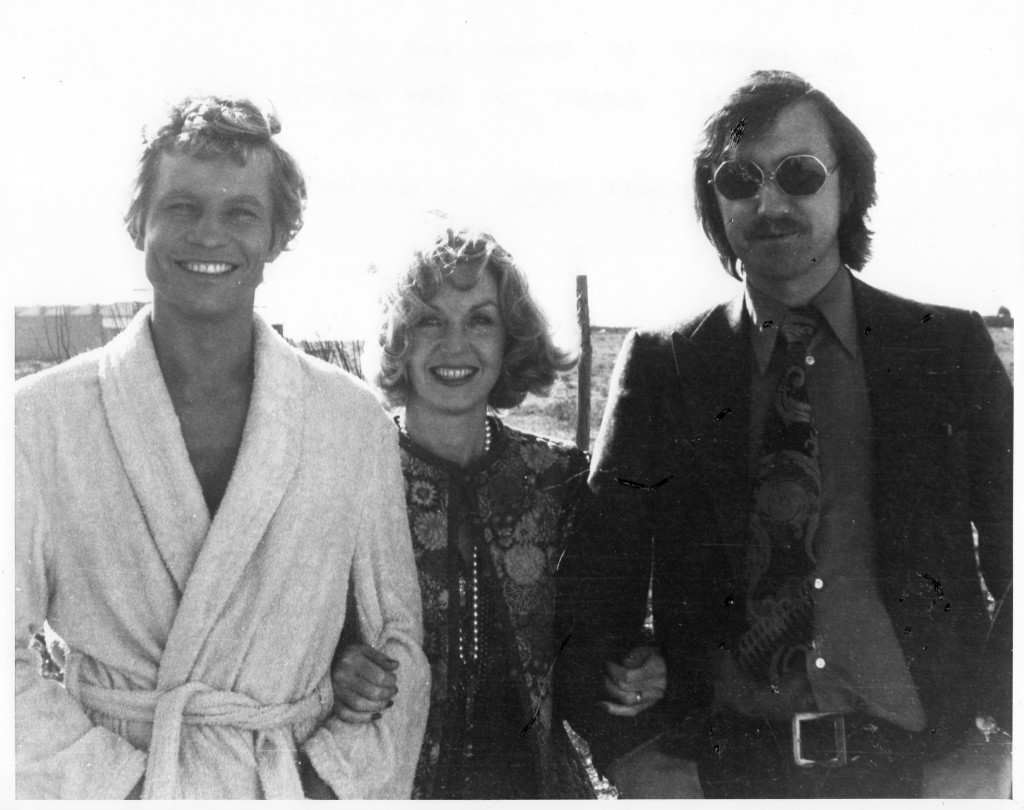
Above: Michael York and his Canadian wife Pat with Ian Woodward on location on a mountain top just outside Madrid. Michael, who played Brian Roberts, the openly bisexual love interest of Liza Minnelli’s Sally Bowles in Cabaret, asked Ian Woodward if he had brought the packets of Wall’s pork sausages with him that he had promised.
“Yes, I’ve got them here,” he said, “handing the Logan’s Run star four packs of sausages in a portable freezer bag.
“Great,” beamed Michael, “she will be pleased!”
The “she” in question was Doctor Zhivago star Geraldine Chaplin. Based in Madrid, and hearing from the star of Logan’s Run and The Three Musketeers that Ian Woodward was flying out to see him, she put in the “sausage request”.
Remembers the filmmaker: “At that time iconic English food brands such as Wall’s were rarely stocked in Spain and Geraldine craved the company’s pork sausages the way others might crave nicotine. Spanish pork sausages, as anyone who has eaten such things will testify, just do not taste like or match up to the Wall’s variety. I’d d been a ‘messenger’ for all sorts of things before then, but for sausages? Never!”
He adds: “While out there, I availed myself of Pat’s expertise as a snapper. Michael had met the photographer Patricia McCallum when she was assigned to photograph him and they married a year later. She was a whizz on depth-of-field. Her son is Star Wars producer Rick McCallum.
“I’ll shamelessly pick people’s brains,” he adds. “One of the best times was when I flew to Lapland with the pioneering, controversial film director Ken Russell. The idea was that with his third wife and their young son, they would make a visit to Santa’s secret hideaway. And indeed that is what happened – and, oddly, Ken (with his shock of long white hair) looked more like Father Christmas than the Lapland Father Christmas!
“We went on Ski-Doos and patted Rudolph, and Dasher, and Dancer, and Prancer, and Vixen, Comet, and Cupid, and Donder and Blitzen. But for two days, while his wife was out shopping with their son, I spent many happy hours with the director of Women in Love, The Devils, Tommy and The Music Lovers. I learnt a lot. The hotel bar during the day was usually empty, but in a cosy, barely-lit corner of the room, next to a Christmas tree with real candles flickering on the branches, two men chatted about everything film.”
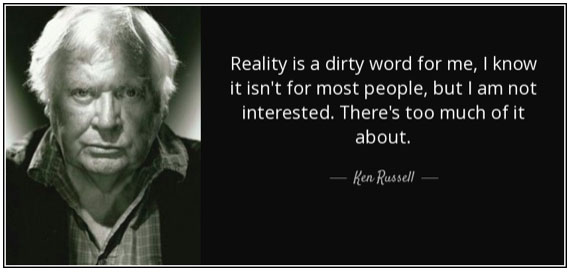
Because of his distinct style that blends fantasy and baroque images with earthiness and sensuality, Ken Russell has been likened to the Italian film director Federico Fellini, one of the most influential filmmakers of all time. In fact, there was a two-way Admiration Society at play here. Fellini used to joke “They call me the Italian Ken Russell!”
“Certainly,” reflects Ian Woodward, “Ken Russell was somebody who proved that British cinema didn’t have to be about kitchen-sink realism—it could be every bit as flamboyant as Fellini. And indeed it was, as revealed time and time again in Russell outings such as Lisztomania, The Boyfriend and The Lair of the White Worm.
“On a personal note, and it pleased me to be able to tell Ken this, I can never listen to Elgar’s beautiful and tremendously uplifting Introduction and Allegro for Strings without re-living a certain vision of the composer that Ken had created on film and, ipso facto, implanted in my head.

The Malvern Hills in Worcestershire
“He had started his career at the BBC as a maker of ground-breaking documentaries, one of which, about Edward Elgar, chronicled the untrained son of a shopkeeper who became the greatest English composer since Purcell and penned Britain’s (more or less) second national anthem, Land of Hope and Glory. At times this film, Elgar, is sheer poetry. The sequence of the young Elgar riding a white pony along the Malvern Hills to the strains of and in synchronisation with the Introduction and Allegro for Strings simply makes the heart soar.
“When my wife Zenka and I spent a long weekend in Worcestershire recently, I just couldn’t relax until I’d found what I believe was the very same tract of the Malvern Hills where Ken Russell had filmed that wonderful, life-enforcing scene all those years ago. For me, Elgar remains a high-point – probably the highest point – among Ken Russell’s many films on composers.”
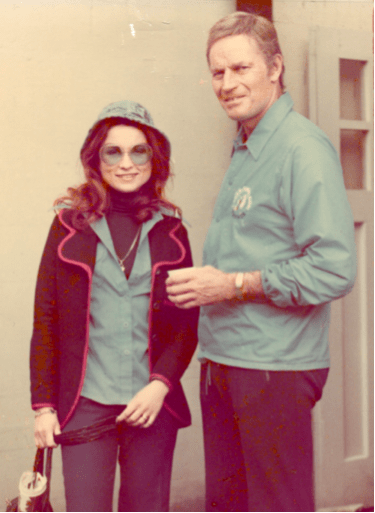
Above: The filmmaker’s wife, Zenka, with Ben-Hur and El Cid star Charlton Heston at Pinewood Studios where he was shooting an American made-for-TV film. Says Ian Woodward: “Each morning before filming began he would put on a pale blue sports shirt and tracksuit bottom and jog around the perimeter of the sound stages. He’d just returned from one such jog when I took this photo of him with Zenka.
“The two stars she most admired (for want of a better word) at that time were Charlton Heston and the Spanish tenor Placido Domingo, both of whom she longed to meet. Her dream came true with the first man, but not with the second man, although she received a sort of consolation prize.
“Domingo was appearing at the Metropolitan Opera House in New York when he called me from his dressing room. I was out but he left a message on our answering machine. The singer had by then become famous to the man in the street the world over as part of the Three Tenors operatic singing group (with José Carreras and Luciano Pavarotti) during the 1990s and early 2000s, a popularity boosted by a little Puccini number called ‘Nessun dorma’.
“Domingo speaks very slowly – in contrast to Pavarotti who spoke very fast – and so his message went on for a good two or three minutes. I swear that Zenka replayed her hero’s message a million times and went into a mini-swoon as she did so. She still has the tape. It hasn’t been heard of late.”

Above: On a Mediterranean tour with the London Festival Ballet (now English National Ballet), here at a waterside bar in the historic harbour of Kyrenia on the northern coast of Cyprus. Photographed by Zenka Woodward.
Left to right: Dancer, standing (identity unknown), dancer Kathryn Wade, Ian Woodward, dancer Nona Telford, celebrity photographer Joe Bangay. At the invitation of directors Sir Kenneth MacMillan and Sir Peter Wright, Kathryn later joined the Royal Ballet as a soloist, dancing many principal roles. After retiring as a performer she became Assistant Director of the Royal Ballet Upper School, later becoming the Director of the English National Ballet School. Kathryn now freelances as an international guest teacher and adjudicator and is a Trustee of the Royal Academy of Dance.
 During the summer of 2015, Joe Bangay – dubbed “Photographer to the Stars” – was given a retrospective of his work at the Blink Gallery, which featured some of the greatest names in music, film, sports and politics from the 1960s to the present day. From capturing rising stars like Madonna on her very first shoot in the UK as well as Wham! and U2 on the brink of stardom, to rare unguarded moments with the already super-famous, Joe met and shot them all. As Joe’s fame grew he was permitted further into the glitterati’s inner circle, providing even more intimate access to the famous names of a generation: Sean Connery, Robert Mitchum, Oliver Reed, Frank Sinatra, Rudolph Nureyev, Freddie Mercury, Mick Jagger and George Best, to name but a few. Says Ian Woodward: “At the show, Joe’s extensive shoot around the sandy shores of Cyprus with my wife Zenka were nowhere to be seen. What a relief!”
During the summer of 2015, Joe Bangay – dubbed “Photographer to the Stars” – was given a retrospective of his work at the Blink Gallery, which featured some of the greatest names in music, film, sports and politics from the 1960s to the present day. From capturing rising stars like Madonna on her very first shoot in the UK as well as Wham! and U2 on the brink of stardom, to rare unguarded moments with the already super-famous, Joe met and shot them all. As Joe’s fame grew he was permitted further into the glitterati’s inner circle, providing even more intimate access to the famous names of a generation: Sean Connery, Robert Mitchum, Oliver Reed, Frank Sinatra, Rudolph Nureyev, Freddie Mercury, Mick Jagger and George Best, to name but a few. Says Ian Woodward: “At the show, Joe’s extensive shoot around the sandy shores of Cyprus with my wife Zenka were nowhere to be seen. What a relief!”
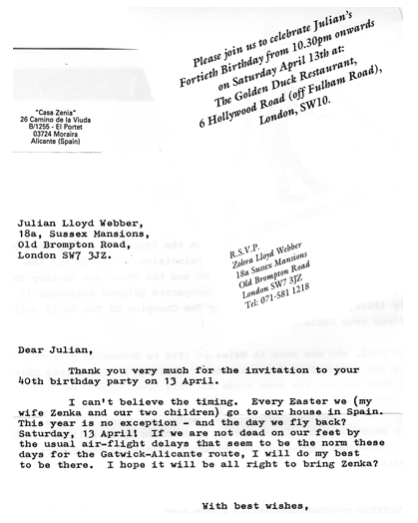
Above: “Enough said!” says Ian Woodward. “I first contacted Julian when I was producing an album of classical favourites performed by Britain’s best solo artists. It was Julian who first taught me an important lesson: switch off the microphone between takes to preserve the equipment’s battery life (certain batteries in those days were often powered by both batteries and the mains). Whenever we met we’d talk at length about his lifelong passions: Leyton Orient football club and traditional English ale.
“I was saddened to hear the announcement of his retirement from public performance as a cellist because of a herniated disc in his neck. His final public performance as a cellist was in May 2014 in Malvern with the English Chamber Orchestra when he played the Barjansky Stradivarius cello (dated c 1690) which he had performed on for more than 30 years.”

The Von Trapp Family in 1941
Julie Andrews warbling her way across the mountains in the role of Maria von Trapp in The Sound of Music remains one of the silver screen’s iconic images. But, as is now very well known, the story follows true events only loosely and the portrayal of the family (above) has frequently irritated the real von Trapps.
For instance, they did not hike over the mountains from Austria to Switzerland in 1938 as the film shows but took a train to Italy. They then sailed to America and formed the famous Trapp Family singing group. Also, the 47-year-old Baron von Trapp, who married the 22-year-old former nun Maria, was mild-mannered in real life and not at all as stern as Christopher Plummer was compelled by the script to suggest in the film.
The real-life Maria, too, could hardly have been more different. Instead of the film’s scatty, wide-eyed girl who sang about whiskers on kittens, Maria was domineering and prone to rages. For her part, she thought the Maria portrayed by Julie Andrews was “wet”.
As an aside, when Ian Woodward met Richard Rodgers’ widow, Dorothy, in New York, she disclosed how, when her husband was writing songs such as “Do-Re-Mi” and “My Favourite Things” for The Sound of Music, he’d sit at the grand piano in the apartment’s spacious and airy reception room while their grandchildren and their friends played all around him, making “a hell of a din”.
Dorothy Rodgers beamed as she disclosed: “Dick didn’t mind any of that. He loved kids. He composed some of his greatest songs while children were running around they keyboard as he was composing.”
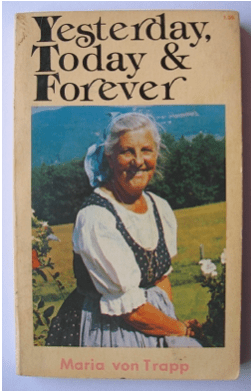
Above: The real-life Maria von Trap, but not as Ian Woodward remembers her. “For a start,” he says, “she is smiling. I don’t think she smiled easily. All her wedding photos seem to indicate this. Posing on her Big Day with the Baron, she gives the distinct impression that she’s at a funeral and that she wishes she could be anywhere but there. Reasonably enough, perhaps.”
Ian Woodward met the real Maria during the rehearsal period for a new London staging of the Rodgers and Hammerstein musical in 1981, starring Petula Clark as Maria and Michael Jayston as Baron von Trapp…and he was, well, surprised by the tough, difficult and rather austere person who was sitting across the restaurant table from him.
He recalls: “She was awesome, terrifying – anyone less like Julie Andrews’ Maria would be difficult to find. Meeting her totally convinced me that The Sound of Music is really just a fairy tale – and what a lovely fairy tale it is! As Agathe, the eldest von Trapp daughter (who died in 2010), later informed me of the stage show and film: ‘It’s a very nice story but it’s not our story. If they hadn’t used our name I probably would have enjoyed it.’
“The real-life Maria told me that Julie Andrews and Mary Martin (who took the role on the Broadway stage) were ‘too gentle – I was a wild creature.’ As we prepared to leave she handed me a buff piece of paper (below) with the Trapp Family Lodge logo at the top which described her despair, and that of all the von Trapps, in losing their entire family archives during a devastating fire just six months earlier.
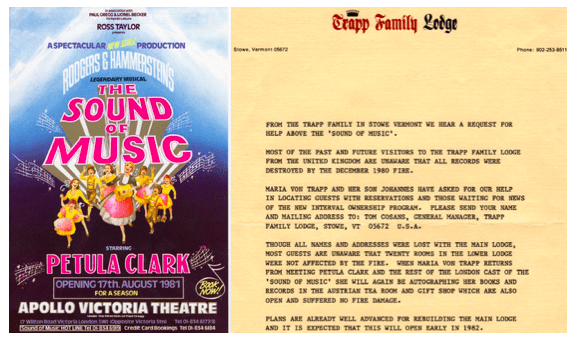
Postscript: The filmmaker’s daughter, Stefanie, was a good friend of Baron von Trapps’ great grandson, Zeno von Trapp, during their time together at Stowe School. “It’s a shame I lost touch with Zeno,” she says when reminded of their friendship. “I think he works in the film industry. Bizarrely, the Trapp Family Lodge is also located in Stowe – but Stowe, Vermont!”
Adds her father: “There’s a lovely photograph of them together at a Stowe ball, which I’ve got somewhere but can’t find. Another close friend of both Zeno and Stefanie at the school was Oscar Humphries, son of Dame Edna Everidge creator Barry Humphries, who is now a fine art and design dealer in Australia and Editor-in-Chief and publisher of the magazine The Art Book. ‘At Stowe, Oscar was always a character,’ recalls Stefanie.”
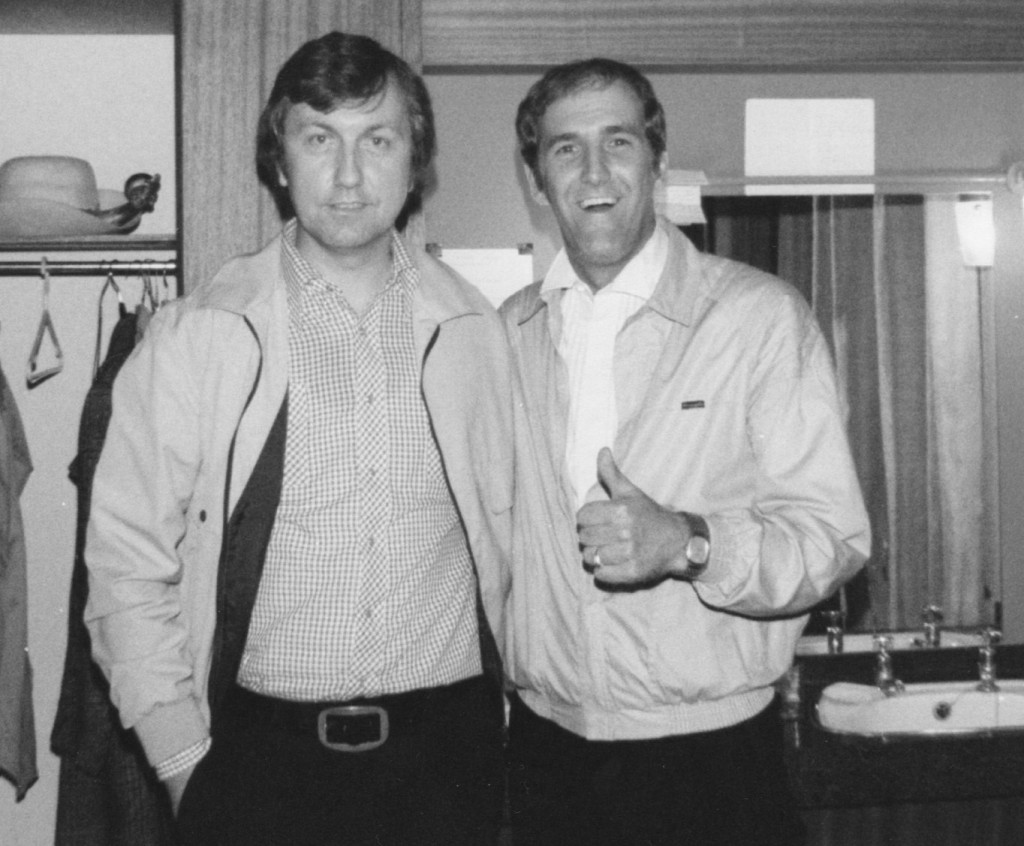
Above: With comedian an actor Russ Abbot in his theatre dressing room when he was headlining his own show in summer season in Great Yarmouth. Says Ian Woodward: “From time to time we’d be joined by support act Les Dennis who was a regular on Russ’s hit television series Russ Abbot’s Madhouse.
“I used to love his quick-fire humour.
“For instance:
“‘When I was crossing the border, a customs officer asked me if there were any weapons in my car.’
“‘What do you need?’ I replied.
“I’m not good at remembering or being able to tell jokes. In fact, I’m very bad at telling jokes. I was even severely reprimanded for it. It happened when I was once at the home, just outside Rye, of the great comedian-writer Spike Milligan. I should have known what I was letting myself in for when a brass plaque outside his front door proclaimed: THE BLIND ARCHITECT.
“I told the former Goon a joke. His serious face never faltered. Never one single millimeter did it twitch. Eventually, after what seemed like three hours, he said: ‘Never tell a joke to a comedian. That was terrible, unfunny, awful. Stick to your day job.’ He was deadly serious about that. For once, he wasn’t joking.
“For all that, I could remember two Russ Abbot jokes. The one above and one he said in his show at Great Yarmouth. I was standing in the wings when he walked on stage and began his show with an announcement. ‘I just want to wish a happy 90th birthday to Derek Maltin. Give him a big hand of applause, everyone…he’s come along with his mum and dad!’ It’s the way you say it and, the way Russ said it, it sounded very funny. The audience roared.”

Above: Kim May as Nature Woman in Adoration: A Natural History, a semi-dramatised natural-history film set to the filmmaker’s specially-written screenplay-in-verse. Says Ian Woodward: “One of the most satisfying things about making films is discovering talent, and discovering Kim May is about as good as it gets. When she walked through the door, at the end of a long, grueling auditions process, I knew I had to look no further: she was the film’s Nature Woman. There were two more actresses to see after Kim left, but my mind had been made up.
“Incredibly, Kim is Dutch. I say ‘incredibly’ because there’s nothing in her spoken English to suggest that she is anything but – well, English. And, when she puts her mind to it, she can pass herself off as an incredible Sloane Ranger. Before moving to London she spent most of her life in Rotterdam from where, at the world-famous Codarts, University for the Arts, she graduated with a BA degree in Music – she’s a great pianist.
“She’s also a graduate of London’s Mountview Academy of Theatre Arts – one of the UK’s leading drama schools – with an MA in Performance Musical Theatre. I must say, I have been fortunate in having several actors in my films who were Mountview graduates, including the awesomely talented Virginia Byron, the leading lady in the new Encore film I’ll Walk with God.
“Kim has a divine singing voice, as theatre audiences will have discovered for themselves when seeing her play Kate/Lois Lane in Cole Porter’s classic musical Kiss Me Kate and the fading Hollywood star Jessica Cranshaw in the Kander and Ebb musical Curtains. On her vocal showreel her emotional delivery of ‘The Wizard and I’ from Wicked – The Musical and ‘On My Own’ from Les Miserables make the hairs stand up on the back of your neck.”
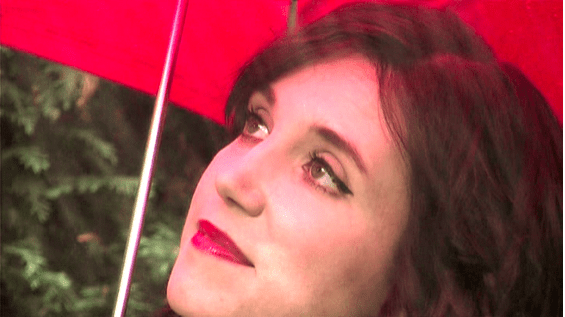
Kim May in the rain scene from Adoration
After finishing the shoot on Adoration, the London-based horseback-riding actress went straight into rehearsals for a national tour of The Wizard of Oz, taking on the iconic role of Kansas farm-girl Dorothy made famous by Judy Garland in the 1939 Hollywood classic with the hit song ‘Over the Rainbow’. Between takes, Kim would treat the crew to spontaneous renditions of “Over the Rainbow”.
“Young or old, or somewhere in the middle,” says Ian Woodward, “this classic Arlen-Harburg number touches people somehow, somewhere, every time. No wonder the American Film Institute ranks it as the greatest film song of all time.”
Kim has many strings to her bow and is a prolific singer-songwriter with numerous recordings to her name. Encore Films were thrilled when she agreed to write and perform the film’s theme song. Called simply “Adoration”, and sung by Kim herself, it appears over the film’s title credits, with a non-vocal, instrumental version over the end credits. Incredibly, she managed to write it to within a second of the required length. Recorded at a studio in Rotterdam, it was produced and mixed by her long-time collaborator and music associate, Victor Summers.
Adoration: A Natural History was one of just 142 films selected from a total of 3240 films submitted from 63 countries around the world for the 2015 programme of Austria’s famous Golden Diana International Film Festival. “It was amazing,” beams Kim, “when Adoration was shortlisted for Official Selection from thousands of films entered from all over the world…it took my breath away. I was also blown away by the fact that in Canada it was given the prestigious Award of Merit prize at the Christian Life International Film Festival in Ontario.”
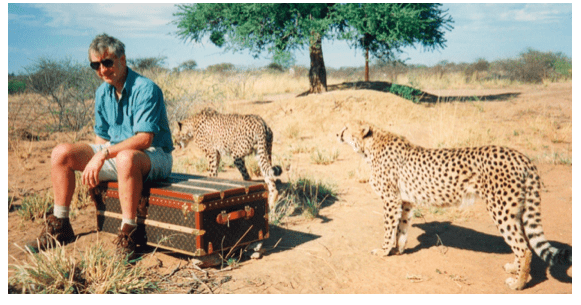
Above: Ian Woodward in Namibia with a couple of curious cheetahs, one eyeing him up as a potential item on the day’s lunch menu. Namibia, on southern Africa’s west coast, is home to the world’s largest cheetah population. The cheetah, the fastest land animal on earth, is the most specialised member of the cat family. It can reach 70 mph and, unlike other cats, has a lean body, longer legs and is not aggressive.
Misconceptions and attitudes about the cheetah and other large predators have led to their endangerment as many people deal with their fear by elimination. As they prey upon livestock roaming the veldt, the carnivores are regarded as vermin and are trapped or killed. To save them from extinction, attitudes must change.
Recalls Ian Woodward: “I was at Okonjima, a private farm two and a half hours north of the Namibian capital, Windhoek. It is nestled among the Omboroko Mountains and is home to the AfriCat Foundation, the world’s largest cheetah and leopard rescue and release programme.
“Okonjima is a family-run business and is malaria-free. Wayne, Donna and Rosalea Hanssen co-own and live on the property which they bought from their parents in 1993, turning what was a cattle farm into a conservation project.
“While there I made a film about the work of the Hanssens. A vivid memory that remains is of Wayne and his pet baboon, Elvis, splashing around in the garden swimming pool. One of his tame, reared-from-a-cub cheetahs, in whose brain had been imprinted the idea that Wayne was its father, had reasoned that his ‘dad’, by splashing around, was drowning.
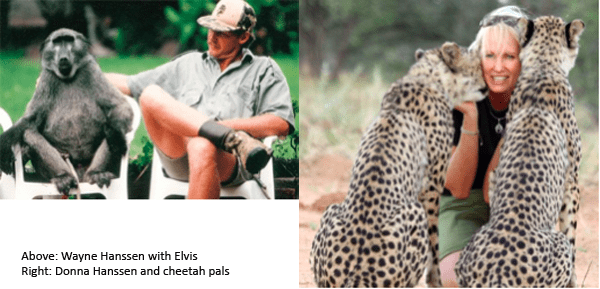
“The cheetah grew increasingly agitated about this, stalking around the edge of the pool. Repeatedly, whenever Wayne ever got near enough to be ‘rescued’, the cheetah would bend over and put one of its paws in the water to try and save ‘Dad’ by pulling him out. It was a very touching scene, which I happily captured on film.
“I grew to adore the human-friendly cheetahs at Okonjima. In an ideal world, it would be heaven on earth to have as pets the carnivore cheetah and the omnivore European red fox. They are, in my estimation, two of the wild animal kingdom’s most beautiful creatures.
“For my 2006 film, A Year in the Life of an English Country Garden – the result of two years’ filming, enabling me to source material from two springs, two summers, etc – I set up various movement-sensitive and heat-reacting lights in the garden to capture the red fox (Vulpes vulpes) ‘on camera’ at night. The rural fox is much more wary than the more brazen and confident urban variety, so filming them is not easy. Eventually, I managed to film them during the day as well, by putting out tinned dog food to attract them to the garden.
“But foxes suffer terribly from sarcoptic mange, a form of canine mange, and one day, sadly, my wife Zenka and I found our favourite fox, ‘Charlie’ (identified by a deep scar on its muzzle), dead at the end of the garden. A quick examination showed that he had been the victim of mange. We cremated him.
“Getting back to the Nambian cheetah. It’s really just like a big version of the domestic cat, although prone to being rather clingy and human-reliant like a dog. When one of the Okonjima cheetahs licks you, they purr like a cat – a very loud purr – and its tongue feels like sandpaper as it slides across your cheek. I felt sort of lovesick when I said goodbye to those cheetahs!”
Below: Lunch break during the shoot of Encore Films’ 2016 musical romance I’ll Walk with God, filmed in the summer of 2015.
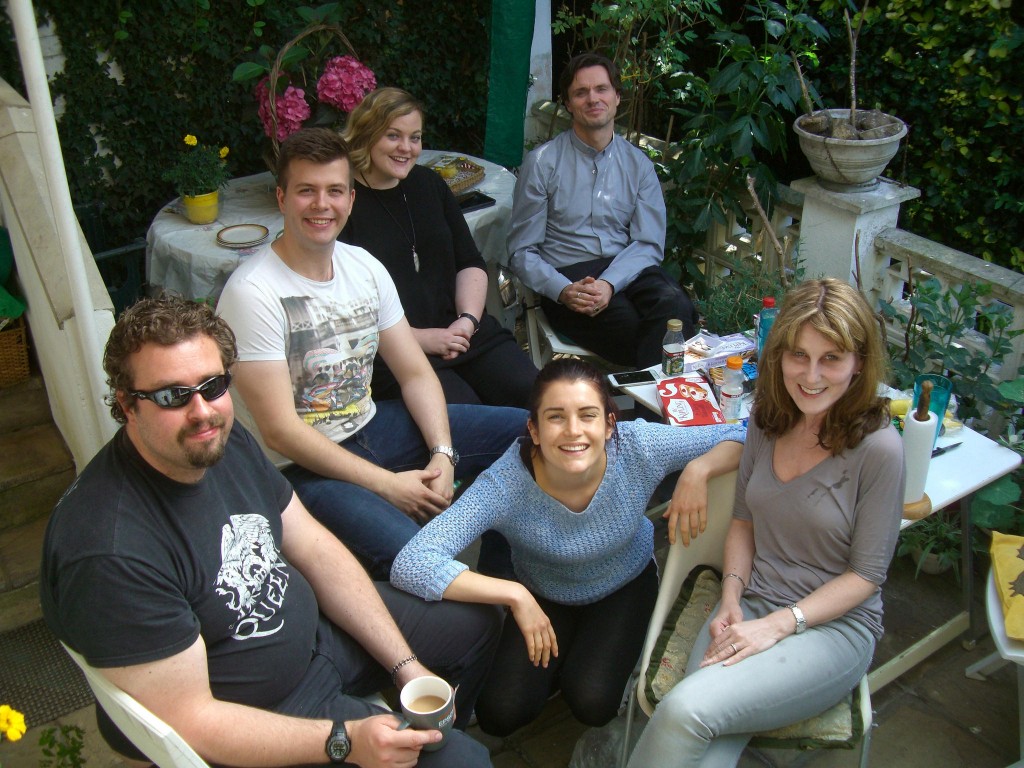
Above, front row (left to right): Paul Richardson (sound-man and boom operator), Claire Heverin (the vicar’s actress daughter, Holly Watson, in the film) and Virginia Byron (who plays Emma Crawford)
Above, back row (left to right): Dave Blissett (production runner), Caroline Peberdy (hair and make-up) and Norman Bowman (the film’s opera-singer-turned-vicar, the Rev Jim Watson).
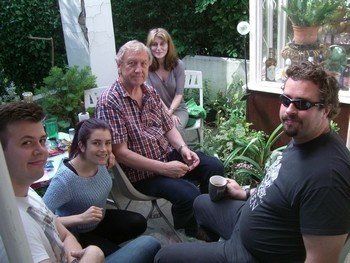
Above (left to right): Production runner Dave Blissett, Claire Heverin (Emma Watson), filmmaker Ian Woodard, Virginia Byron (Emma Crawford) and Paul Richardson (sound-man and boom operator)
The day’s filming included a scene showing Emma to be very ill, hence her pallid, anaemic-looking make-up. Says Ian Woodward: “The cast and crew – obviously not all present in this photo – were a dream team. The nightmares and disasters that one expects to happen during filming were completely and blissfully absent on this shoot.”
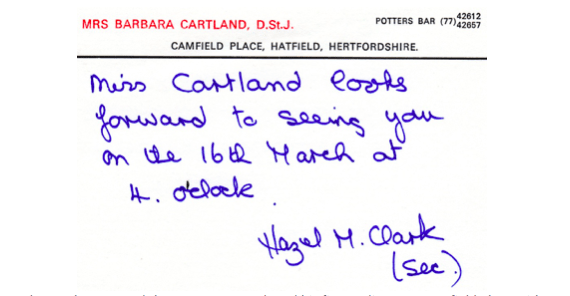
Above: The postcard that gave Ian Woodward his first audience at Camfield Place with Barbara Cartland, who was one of the best-selling authors as well as one of the most prolific and commercially successful writers of the 20th century. The original Tudor manor house on the Cartland estate was pulled down by Beatrix Potter’s grandfather who rebuilt the house in 1867 in the 19th-century Italianate style. Beatrix Potter wrote that Camfield was the place that she loved best and was where she wrote The Tale of Peter Rabbit.
The estate, formerly a deer park, is now historic parkland. The fabulous 400-year-old oak tree that stands majestically a short distance from the house is said to have been planted by Elizabeth I in 1550 on the spot where she shot her first stag during her imprisonment at nearby Hatfield in Hertfordshire. Barbara Cartland had some of the acorns from the tree dipped in gold, one of which she presented to the filmmaker on that first visit. “Sadly,” he says, “I’ve lost it – but I’ve still got the pink ribbon that went round the lavish box in which it sat.”
The novelist and the filmmaker both had the same literary agent. It gave them much to talk about. “She’s still my agent,” he says. “She’s the only agent I’ve ever had…the best literary agent in the world. Of course!”
On Ian Woodward’s second visit to the Cartland writing factory the Queen of Romance, on hearing the name of his wife, Zenka, went into an ecstatic tailspin: “How romantic sounding! Zenka! Ah, Zenka will be the name of the heroine of my next novel.” And she was true to her word. Zenka appears as the fragile society heroine in The Power and the Prince.
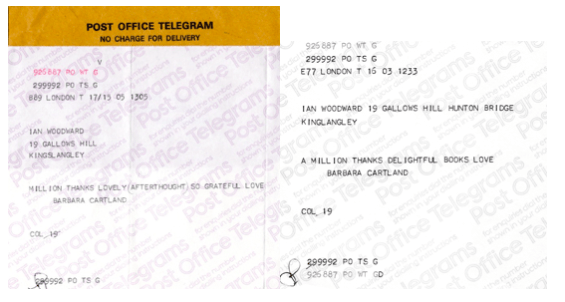
Scattered around one of the lavishly ornate reception rooms, where Ian Woodward met the romantic novelist on four different occasions, were framed photographs of Lord Mountbatten of Burma. She maintained a long friendship with “Dickie” Mountbatten, whose 1979 assassination by the IRA she described as the “greatest sadness of my life”.
Says Ian Woodward: “We talked often about Mountbatten, the Queen’s cousin and Prince Charles’s favourite uncle. As it so happened, Mountbatten was the Governor of one my schools. He would frequently turn up unannounced – ‘Good morning, Sir’ we’d all chant monosyllabically, standing up obediently and remaining upright until he gave us permission to sit down again. He’d position himself at the back of the classroom, listening, observing.
“He had square-looking facial features and, because of this, we all called him (rather ungraciously) ‘Blockhead’. We were like that. We had a gaunt, ageing, totally bald-headed maths teacher who was known to us all, and possibly also to him, as ‘Gandhi’. School kids…they really are the pits!”
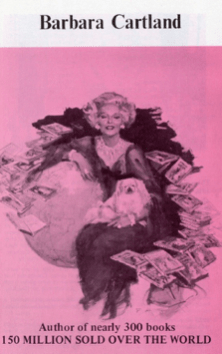
The 7th Lord Brabourne – who, under the name John Brabourne, was a film producer whose credits included Sink the Bismarck!, Death on the Nile and A Passage to India – was married for almost 60 years to the 2nd Countess Mountbatten of Burma, the daughter of Earl Mountbatten. Lord and Lady Brabourne were on board the fishing boat that was blown up off the west coast of Ireland by an IRA bomb, killing his father-in-law, his mother and his son, Nicholas Knatchbull.
“But Lord and Lady Brabourne were determined that the Mountbatten name would not forever be associated with tragedy,” continues Ian Woodward, “and they devoted the years after the bombing to restoring peace, hope and certainty to their family. I visited them not long afterwards at Broadlands, their ancestral estate near Romsey in Hampshire, in connection with his new film, The Mirror Crack’d, starring Angela Lansbury as Miss Marple. Lady Brabourne’s right leg was still in plaster from the bombing and, when sitting down, she would prop it up on the sofa. ‘Shocking,’ she said simply, sotto voce, with quiet understatement, shaking her head, ‘shocking.’”
Dame Barbara Cartland died May 2000, aged 98, and was laid to rest in a cardboard coffin under Elizabeth I’s oak tree in the grounds of Camfield Place.
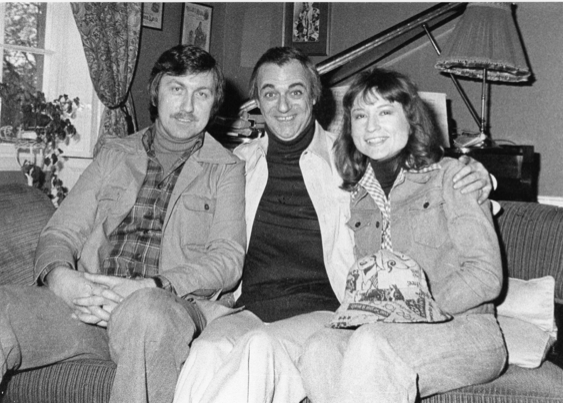
Above: Ian Woodward and wife Zenka with comedian and actor Roy Hudd, presenter of The News Huddlines, the topical sketch show that ran for 26 years on BBC Radio 2. Roy, who played Archie Shuttleworth in Coronation Street, gained critical acclaim in Dennis Potter’s powerful drama Lipstick On Your Collar. He was awarded the “Best Actor in a Musical” Laurence Olivier Theatre Award for his role as vaudeville entertainer Bud Flanagan in Underneath the Arches.
“In this photo,” muses Ian Woodward, “it looks as if the three of us might have been snapped at a preliminary meeting of the committee of The Turtleneck Pullover Society. I never really liked the turtleneck…made my neck itch too much.”
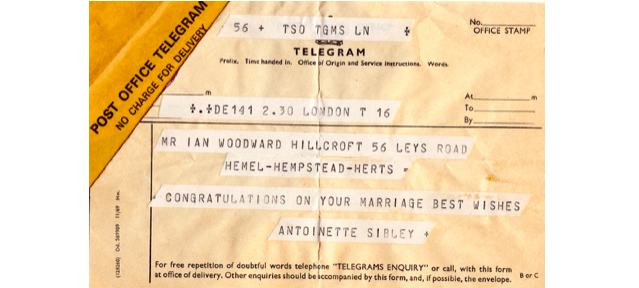
Dame Antoinette Sibley became one of the leading ballerinas of her generation during her time with Royal Ballet at Covent and danced throughout the world, working with many of the great choreographers of the period. She created several ballets with Frederick Ashton. She remembers when she was first cast in the choreographer’s The Dream alongside Anthony Dowell, one of the great danseurs nobles of the 20th century and later to become both Artistic Director of the Royal Ballet and a knight.
“We thought we were the lovers” she says, “and then we started the pas de deux and it was clearly not human. But no one ever told us we were Titania and Oberon!”

Above left: Antoinette Sibley as Titania in The Dream
Dame Antoinette was renowned during her time at the Royal Ballet for her performances in MacMillan’s Romeo and Juliet. She also danced the major roles of Odette and Odile in Swan Lake, the title role in Giselle and Aurora in The Sleeping Beauty. Further roles were in Ashton’s ballets, Symphonic Variations and Daphnis and Chloë, Jerome Robbins’s Dances at a Gathering and Afternoon of a Faun. She was also the ballerina MacMillan used to create the lead in Manon.

Antoinette Sibley in partnership with Anthony Dowell and (right) today
She was the epitome of classical English ballet and was especially praised for her partnership with Anthony Dowell. Says Ian Woodward: “Sibley and Dowell was a partnership which, in my estimation, surpassed that of Fonteyn and Nureyev in terms of lyrical beauty and classical precision and in lighting up the stage with such joie de vivre. They were simply incomparable.
“It was a style that was as English as Wedgwood and Royal Doulton, as rooted in English culture as the Honourable Charles Stewart Rolls and Sir Frederick Henry Royce (1st Baronet) of Rolls-Royce fame. There was universal delight in the ballet world when Antoinette Sibley, one of Britain’s best-loved ballerinas, was made a DBE in 1996. I remember toasting her good health and her even better fortune when Buckingham Palace made the announcement of her upcoming investiture!”
From 1991 until she retired in 2012 she was President of the Royal Academy of Dance. She continues to work as a guest coach for the Royal Ballet.

Above: Ian Woodward with the chimps of Chimfunshi. Once millions of chimpanzees roamed the forests of 25 countries in equatorial Africa. Today they are an endangered species. Chimfunshi Wildlife Orphanage, where these photographs were taken, is a sanctuary for chimpanzees, located in Zambia’s Copperbelt Province. It is absolutely not a tourist destination, but visitors are welcome, as the filmmaker was made to feel welcom, as long as they adjust themselves to the daily routine: animal welfare is their focus.
The orphanage is currently a home for 132 chimpanzees: four families live in four large enclosures that measure between 19 and 77 hectares each, each being part of a mammoth property encompassing more than 4200 hectares. Chimpanzees from all over the world are rescued from poachers and amusement parks and brought to the Orphanage at Chimfunshi.
Smugglers stuff them in very small boxes to sell them as pets or as research animals. On the “global market,” chimpanzees are worth up to £65,000. Most of them are injured and traumatised when they arrive at Chimfunshi and need intensive care. As soon as they are in good health, they are carefully integrated into one of the chimpanzee families.
Explains Ian Woodward: “I had gone there as a naturalist to make a film about the work of Chimfunshi’s founders, David and Sheila Siddle. Their devotion to these primates all began in 1983 when a ranger brought a badly injured infant chimpanzee to their ranch. They nursed the chimp – nicknamed ‘Pal’ – back to health and once word of the little chimp’s recovery spread, they found themselves inundated with orphaned chimpanzees.

“When I was there, electricity was talked about as if it was something rare and wonderful that you only had if you lived in a town or city. For a couple of hours in the evening David would crank up a generator and give us some of that precious electrical energy, enough to read a book from a bulb hanging from a rafter without a shade and watch a film on a monitor screen via a DVD player. At the end of my stay at Chimfunshi I showed them my raw footage on the monitor.
“I was delighted by one thing that Sheila said as a particular sequence, showing a family of chimps in a large enclose, came to an end. ‘You’ve filmed some chimp behaviour,’ she said, ‘that I’ve never seen before and which I think has been captured on film for the first time. You must send it to Jane Goodall. She’d be over the moon about it.’ I did send it to her, and she was over the moon about it!’”
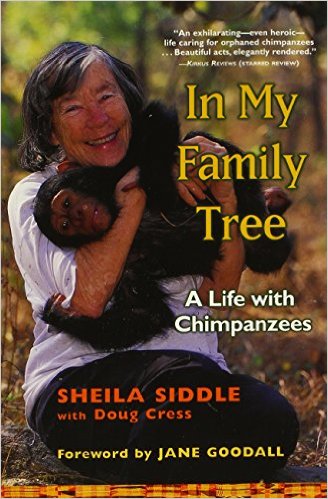
Dame Jane Goodall is the British primatologist, ethologist and anthropologist generally regarded as the world’s foremost expert on chimpanzees. The doctor is known internationally for her decades-long study of social and family interactions of wild chimpanzees in Gombe Stream National Park, Tanzania. “I felt humbled,” says Ian Woodward , “that I had contributed in some small way to an increase knowledge and better understanding of chimp behaviour.”
He continues: “While there I took a boat trip on the Africa Queen, with outboard engine and coxswain – it can take between five and six people – and along the route of the river that day there were a lot of eyes watching us. The Zambezi seemed to be alive with hippos – or is it hippis, as in hippopotami?

“The photo above is of Billy. She was brought to Chimfunshi as an orphan and Sheila just couldn’t turn her away. So while Chimfunshi mostly focuses on chimps, they also have a few other odd animals. Billy or not Billy, she was a hippo and hippos have very sharp teeth inside very big mandibles. On top of which, they run surprisingly fast, up to speeds of 25mph. In Africa they have claimed thousands of lives.
“One day, foolishly flirting with danger – yet again – I walked across a small tract of land, knowing that Billy was somewhere in the vicinity. I was prepared to take a chance because it was shortcut to the river, where I wanted to film a group crocodiles that used to lurk near the bank side in mid afternoon. There was a roughly-made 4ft-high walled boundary to the back of me and a similar boundary to the front of me.
“I was halfway between the two points when I turned around and saw Billy running towards me. With camera slung on my back, I ran as fast as my sweaty, mosquito-bitten legs would take me to the boundary perimeter, and I managed to leap on top of the flimsy, crumbling, chalk-like wall just as Billy screeched to a halt. She gazed up at me and snorted a sort of hippo disdain. She looked as cool as a Zambian cucumber, while I was huffing and puffing and as soaking wet as if I’d just stepped out of a shower.
“The scene, as described, might sound quite amusing – there again, it might not – but I can say without exaggeration that it was the most frightening day of my life. What if I’d tripped on a clump of veldt grass? I kept thinking, ‘Don’t stumble, don’t fall to the ground.’
“When I was about a hundred yards from the wall towards which I was running, it crossed my mind in a millisecond that I was probably going to be flown back to England in a wooden box.
“Thankfully, Chimfunshi is one of the safest and most beautiful places on earth. Just don’t be an idiot like one filmmaker turned out to be! In fact, if you’re ever in this remote part of north western Zambia, it’s well worth a visit. Indeed, it’s worth taking a trip here from anywhere in Zambia, such is the privilege of being able to spend time with these fascinating animals. In a world of crass commercialism, Chimfunshi thrives on unconditional love and absolute dedication.”
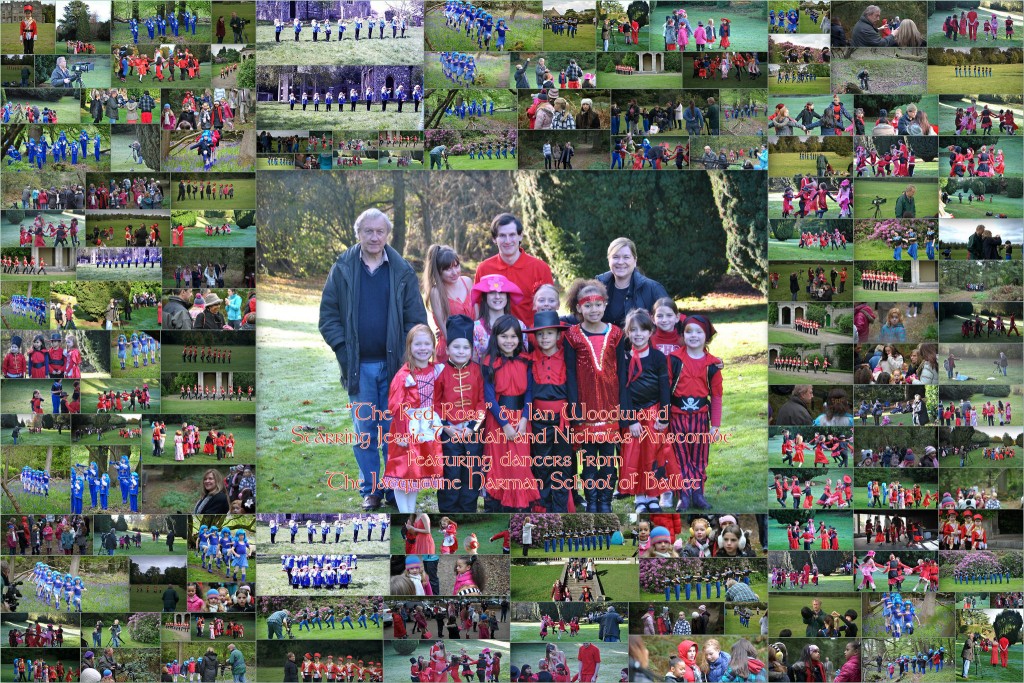
Above: Collage created by the father of one of the young dancers from production stills taken during the making of Ian Woodward’s fantasy film The Red Rose. It stars Jessica Talulah as the Girl/Princess Victoria and Nicholas Anscombe as the Young Man/Prince William, with Michael Aston as the Grand Duke and Greg Page as the Cardinal, and dancers from the Jacqueline Harman School of Ballet, plus a senior dancer from the Royal Ballet School.
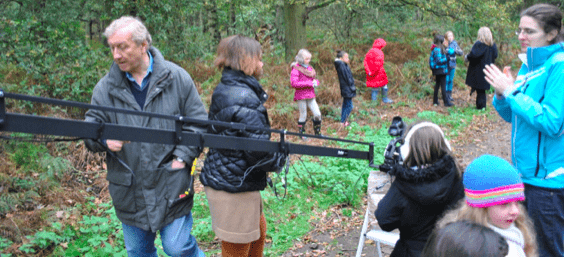
Above: Preparing the final crane shot for The Red Rose

Above: On location with The Red Rose, the film’s choreographer Jacqueline Harman on the left
With voice-over by top VO artist Phil Sayer and music by Tchaikovsky, it won in Australia the award Best Film in General Section – the Bronze Cineman Trophy – at the Melbourne International Movie Festival 2013.
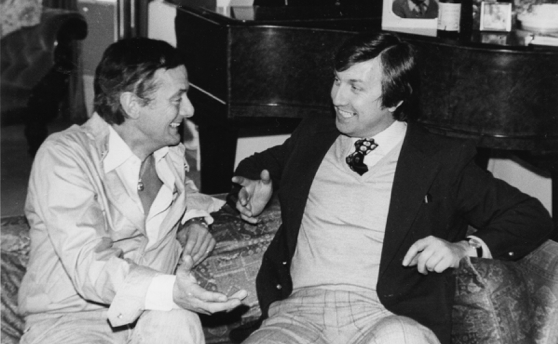
Above: With the actor Francis Matthews who found fame playing Francis Durbridge’s amateur private detective Paul Temple in the BBC television series of the same name. He was a regular in Hammer horror films including The Revenge of Frankenstein and the hero of both Dracula: Prince of Darkness and Rasputin the Mad Monk.
Curiously, he was particularly proud of supplying the voice of Captain Scarlet for Gerry and Sylvia Anderson’s Supermarionation TV series Captain Scarlet and the Mysterons. He later starred opposite Morecambe and Wise in the films The Intelligence Men and That Riviera Touch which led to a close friendship with Eric Morecambe, appearing in Eric & Ernie’s Christmas Show.
“Before I left,” says Ian Woodward, “we went over to his grand piano behind us and played a four-hand keyboard transcription of Beethoven’s Minuet in G. It’s a very popular piece, especially among novice pianists. In fact, it was the first piece of piano music I was given to learn in two hours as a student at the Watford School of Music and Drama.”
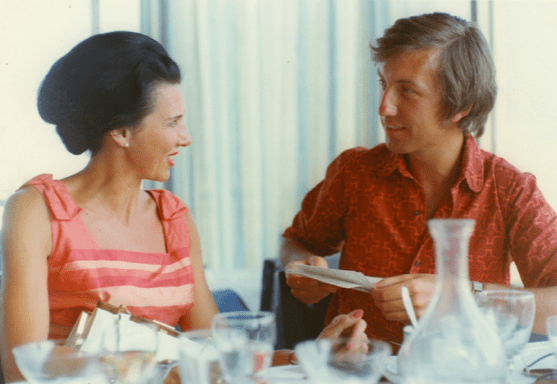
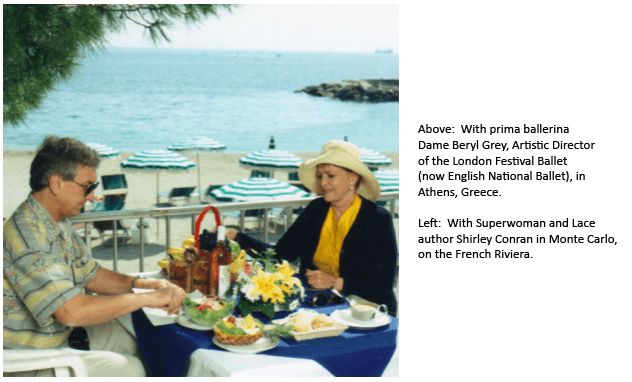
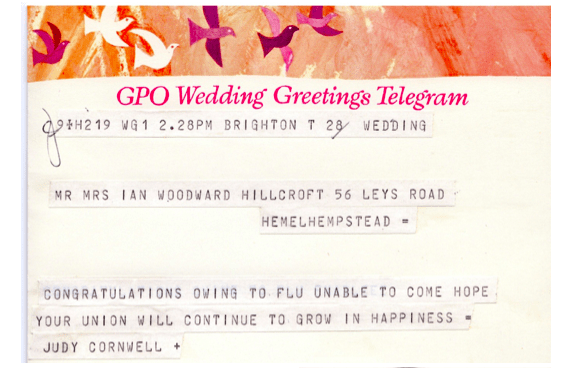
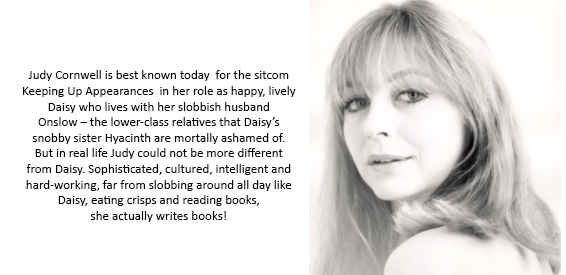
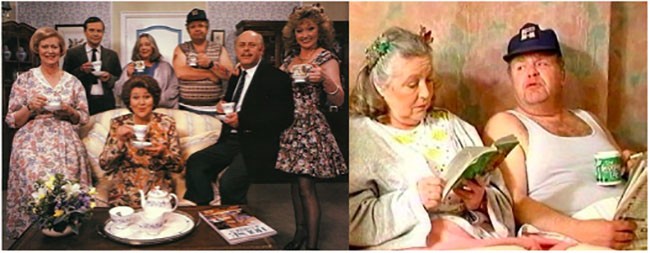
Her numerous published novels include Fear and Favour, The Seventh Sunrise, Fishcakes at the Ritz and Cow and Cow Parsley. Not surprisingly, too, her moving, hilarious and thought-provoking autobiography Adventures of a Jelly Baby was a best-seller.
“My first and lasting memory of Judy is of her sparkling wit and warm personality,” says Ian Woodward. “No matter what the world might be trying to throw at you, you would always feel good in Judy’s company. The stories of her dancing days were funny, heartfelt and illuming.”
Born in England and partly educated here before emigrating with her family to Australia, she began her theatrical career as a dancer and singer in pantomime, revue, cabaret and musicals. She later changed course and worked as juvenile leads in repertory theatre before embarking on several seasons with the Royal Shakespeare Company.
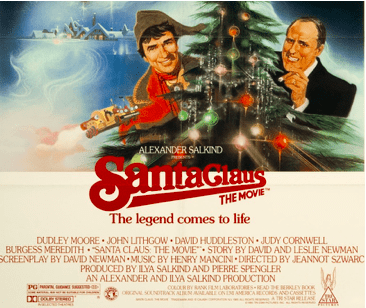
She played Mrs Claus alongside Dudley Moore and David Huddleston in the Hollywood fantasy film Santa Clause: The Movie and the gentle, caring Pegotty in the big-screen adaptation David Copperfield. Her TV roles have embraced Queenie, the mean tyrant mother of lovable loser Heather Trott in EastEnders and guest appearances on Doctor Who and ITV’s revived Birds of a Feather last year.
In autumn 2015 she embarked on a stage tour of Agatha Christie’s A Murder Is Announced, playing Miss Marple. “My favourite Miss Marple was Joan Hickson,” says Judy, who lives in Brighton with her husband John Parry. “I’d worked with her on a Miss Marple TV episode and I saw how professional she was. I was murdered in this episode, so it was nice that she solved it!”
All power to Judy’s hard-grafting elbow in 2016!

Galina von Meck was the great-grandniece of Tchaikovsky and the granddaughter of his wealthy patroness, Nadezhda von Meck, to whom the great Russian composer dedicated his 4th Symphony (“To My Best Friend”). Ian Woodward, a lifelong Tchaikosvky aficionado, was privileged to know Galina towards the end of her long life: she was just a few months short of her 94th birthday when she died in 1985.
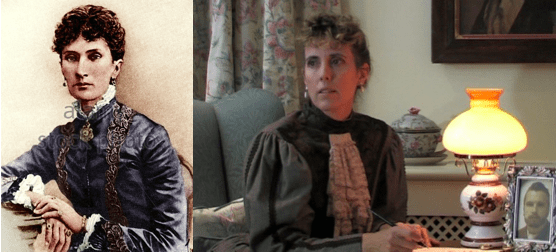
Above Left: Galina’s grandmother, Nadezhda von Meck, Tchaikovsky’s patroness.
Above right: Véronique Sevegrand as Nadezhda von Meck in Ian Woodward’s film Love Song: The Triumph and Tragedy of Tchaikovsky
Galina, who was the third child of Nadezhda von Meck’s son Nikolay and Tchaikovsky’s niece Anna Davydova, was aged two when Tchaikovsky held her in his arms. “My mother said Uncle Peter breathed spirituality through every pore in his skin.” Tchaikovsky was a deeply religious man, as is revealed in key scenes in Ian Woodward’s 2014 film Love Song: The Triumph and Tragedy of Tchaikovsky. The composer drew great solace from praying in churches, alone, at the altar.
As a young man, the filmmaker was also friends for many years with the Russian composer Alexander Tcherepnin, whose father, Nikolai Tcherepnin (pupil of Nikolai Rimsky-Korsakov and acquaintance of Tchaikovsky) was also a composer and music director of Diaghilev’s legendary Ballets Russes.
Ian Woodward listened, enthralled at one of Alexander Tcherepnin’s famous musical soirées, as Alexander told him stories about Tchaikovsky told to him by his father Nicholas. It was famously at one these soirées that Ian Woodward, on being introduced to a sculptor named Oleg Prokofiev, naively asked “Any relation of the composer of the ballet Romeo and Juliet?” He replied: “Yes, he was my dad!”
Galna translated much of the correspondence between Tchaikovsky and her grandmother into English and a great deal of what the filmmaker learned from her and Alexander Tcherepnin appears in Love Song.
Galina, who was the third child of Nadezhda von Meck’s son Nikolay and Tchaikovsky’s niece Anna Davydova, was aged two when Tchaikovsky held her in his arms. “My mother said Uncle Peter breathed spirituality through every pore in his skin.” Tchaikovsky was a deeply religious man, as is revealed in key scenes in Ian Woodward’s 2014 film Love Song: The Triumph and Tragedy of Tchaikovsky. The composer drew great solace from praying in churches, alone, at the altar.
As a young man, the filmmaker was also friends for many years with the Russian composer Alexander Tcherepnin, whose father, Nikolai Tcherepnin (pupil of Nikolai Rimsky-Korsakov and acquaintance of Tchaikovsky) was also a composer and music director of Diaghilev’s legendary Ballets Russes.
Ian Woodward listened, enthralled at one of Alexander Tcherepnin’s famous musical soirées, as Alexander told him stories about Tchaikovsky told to him by his father Nicholas. It was famously at one these soirées that Ian Woodward, on being introduced to a sculptor named Oleg Prokofiev, naively asked “Any relation of the composer of the ballet Romeo and Juliet?” He replied: “Yes, he was my dad!”
Galna translated much of the correspondence between Tchaikovsky and her grandmother into English and a great deal of what the filmmaker learned from her and Alexander Tcherepnin appears in Love Song.
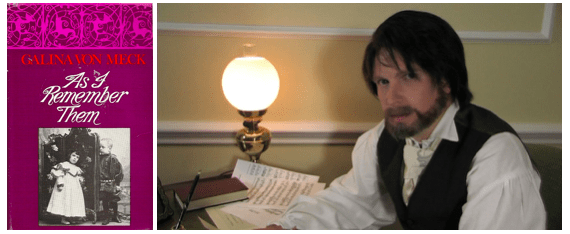
Above: Galina von Meck’s memoirs and, right, Simon Alexander who plays the composer in Love Song: The Triumph and Tragedy of Tchaikovsky
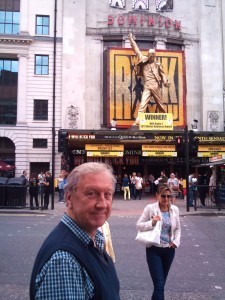 Left: Ian Woodward outside the Dominion Theatre in London’s West End just before his third visit to We Will Rock You. The musical, based on the songs of Queen with a book by Ben Elton, tells the story of a group of Bohemians who struggle to restore the free exchange of thought, fashion and live music in a distant future where everyone dresses, thinks and acts the same. Musical instruments and composers are forbidden and rock music is all but unknown.
Left: Ian Woodward outside the Dominion Theatre in London’s West End just before his third visit to We Will Rock You. The musical, based on the songs of Queen with a book by Ben Elton, tells the story of a group of Bohemians who struggle to restore the free exchange of thought, fashion and live music in a distant future where everyone dresses, thinks and acts the same. Musical instruments and composers are forbidden and rock music is all but unknown.
Choreographed by Arlene Phillips, who wrote the Foreword to Ian Woodward’s multi-themed book Dance, the original West End production opened at the Dominion a staggering 14 years ago. “It’s still the best show in town with brilliant music by the best rock band in the world,” insists the filmmaker who dubs himself “a Queen fanatic”.
He says: “One of the highlights of my life was meeting Queen’s lead vocalist and songwriter Freddie Mercury. It wasn’t just his flamboyant stage persona and powerful vocals over a four-octave range that knocked me for six – and continues to do so – but the sheer genius of the man. The word genius is over-used but Freddie Mercury was a genius, and more. He was right up there with that other flamboyant genius-entertainer, Mozart. I died a little bit inside when Freddie passed away in 1991.
“On one balmy summer’s afternoon when we were at our house in Spain, the Spanish equivalent of the UK’s Classic FM radio devoted six hours – six hours! – to the life and music of Queen. Neither The Last Night of the Proms nor chocolate sticky toffee pudding could possibly compare to this!
“My love of all things Mercury-and-Queen is so profound that when my son was married in Ireland I even persuaded (for want of a better fib) bride and groom to have the organist play Freddie’s ‘Bohemian Rhapsody’ during the signing of the register – along with the well-known ‘Vltava’ section (always played on Czech Airlines when you are descending on Prague) from Smetana’s orchestral masterpiece From Bohemia’s Woods and Fields in honour of his mum Zenka, a real-life Bohemian from North Bohemia.”
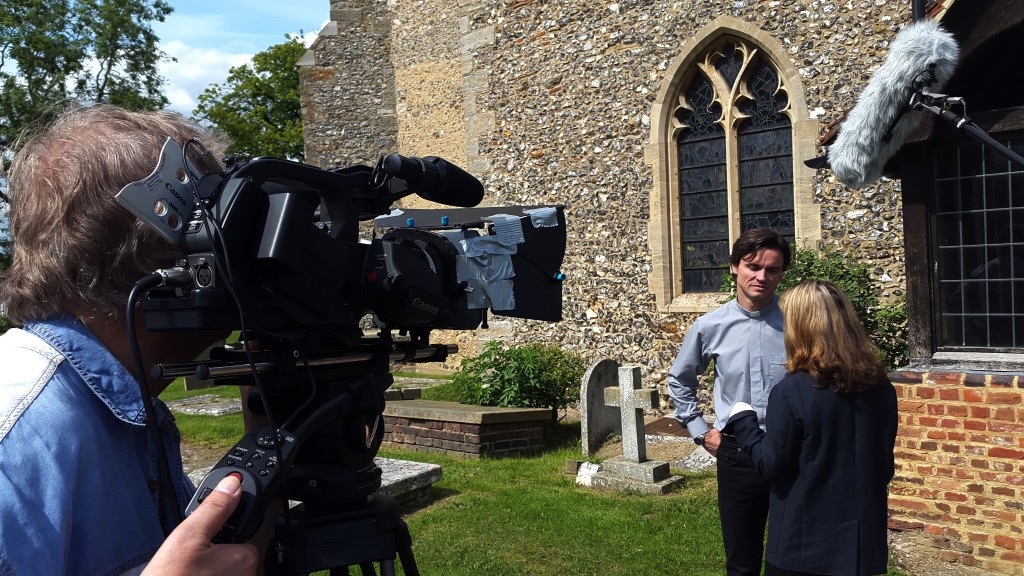
Above and below: Norman Bowman and Virginia Byron on location for Ian Woodward’s 2016 musical romance, I’ll Walk with Romance. Says the filmmaker: “It was a huge pleasure to work with Norman and Virginia on this production about a fictitious former opera star from America who relocates to England with his family and turns to the priesthood. Playing the roles of the Rev Jim Watson and university lecturer Emma Crawford are two great actors in their prime and at their best and who can each boast an impressive ‘back story’.”
Norman, a stalwart of West End musicals including Mamma Mia! and Les Miserables, worked alongside Jude Law in Henry V and appeared as Ross in Kenneth Branagh’s highly-acclaimed 2014 production of Macbeth. Says Norman : “My role in Guys and Dolls led to me appearing on stage with Ewan McGregor, who I became friends with. When Ewan moved on, I was given the lead role of Nathan Detroit and was privileged to play opposite Patrick Swayze.”
Virginia, too, alternates with consummate ease between comedy and drama. Be it playing Liz Essendine in Present Laughter or Ruth Condamine in Blithe Spirit, in two of Noel Coward’s best plays, she is at her comedic best. She has just starred in Ray Cooney’s classic Funny Money. Along the way she has played most of avant-garde playwright Samuel Beckett’s female characters and toured as the Danish prince’s mother in Hamlet, Olivia in Twelfth Night and Lady Macbeth in Macbeth.
Added to the mix has been the wonderful Claire Heverin as Jim Watson’s actress daughter, Holly. On the London stage she has enjoyed a run in Alan Ayckbourn’s Neighbourhood Watch, starred as Hermia in A Midsummer Night’s Dream, Snail in Karel Čapek’s satire The Insect Play and Magdalena in Lorca’s The House of Bernarda Alba. She is a gem: a talent to watch.
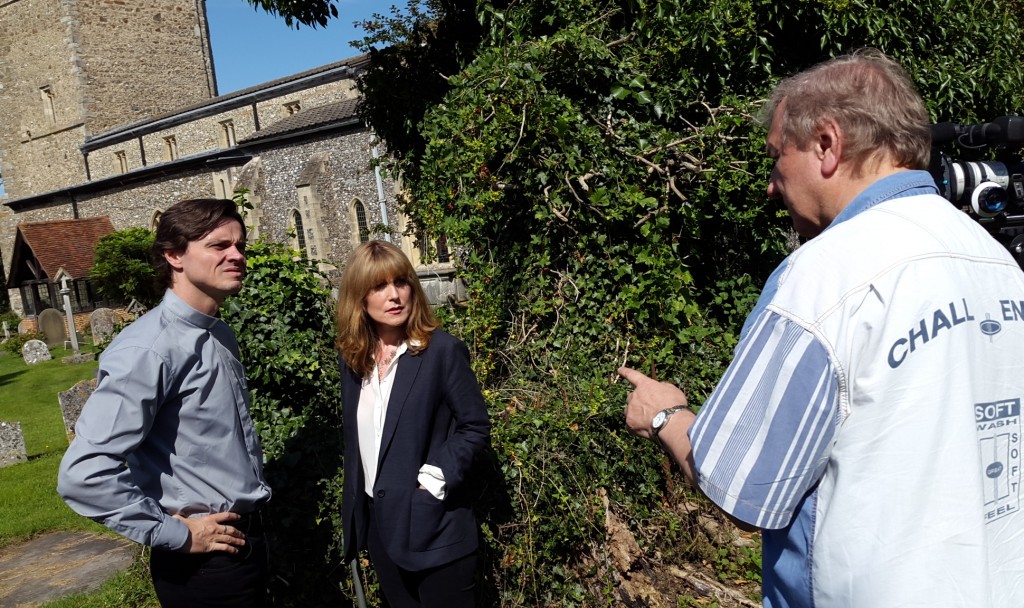
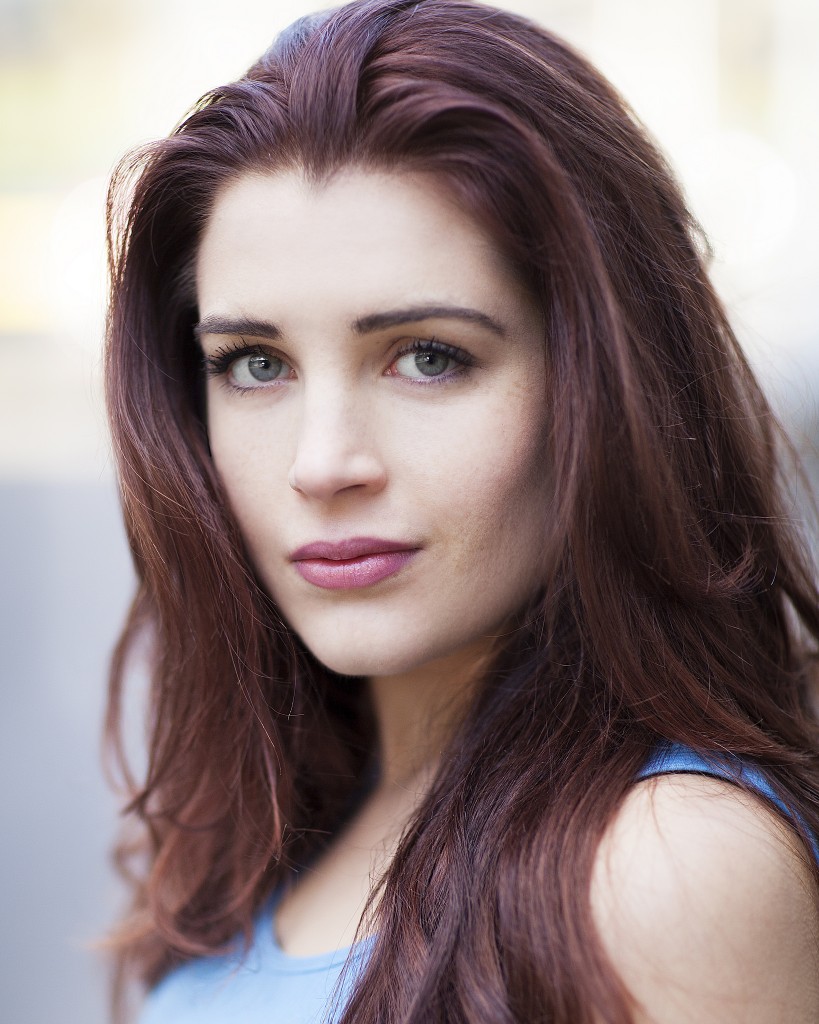
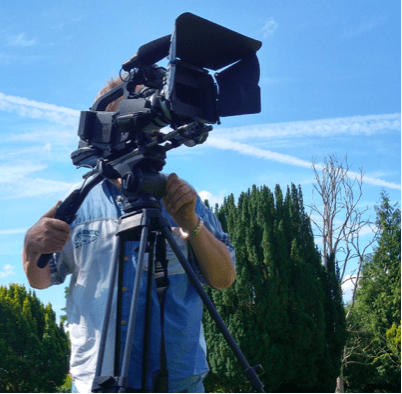
We’ll be seeing you!
ENCORE FILMS © 2016
